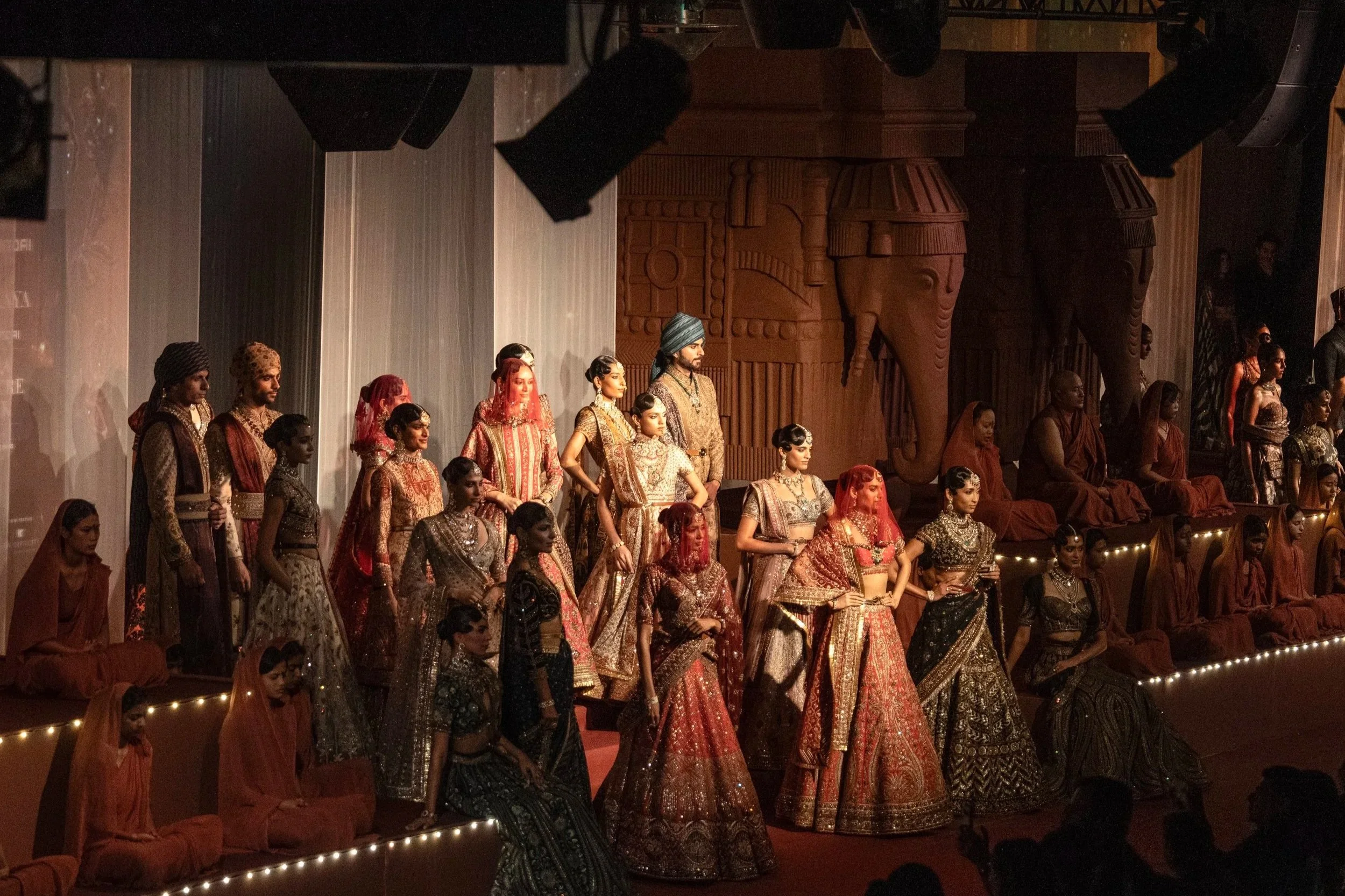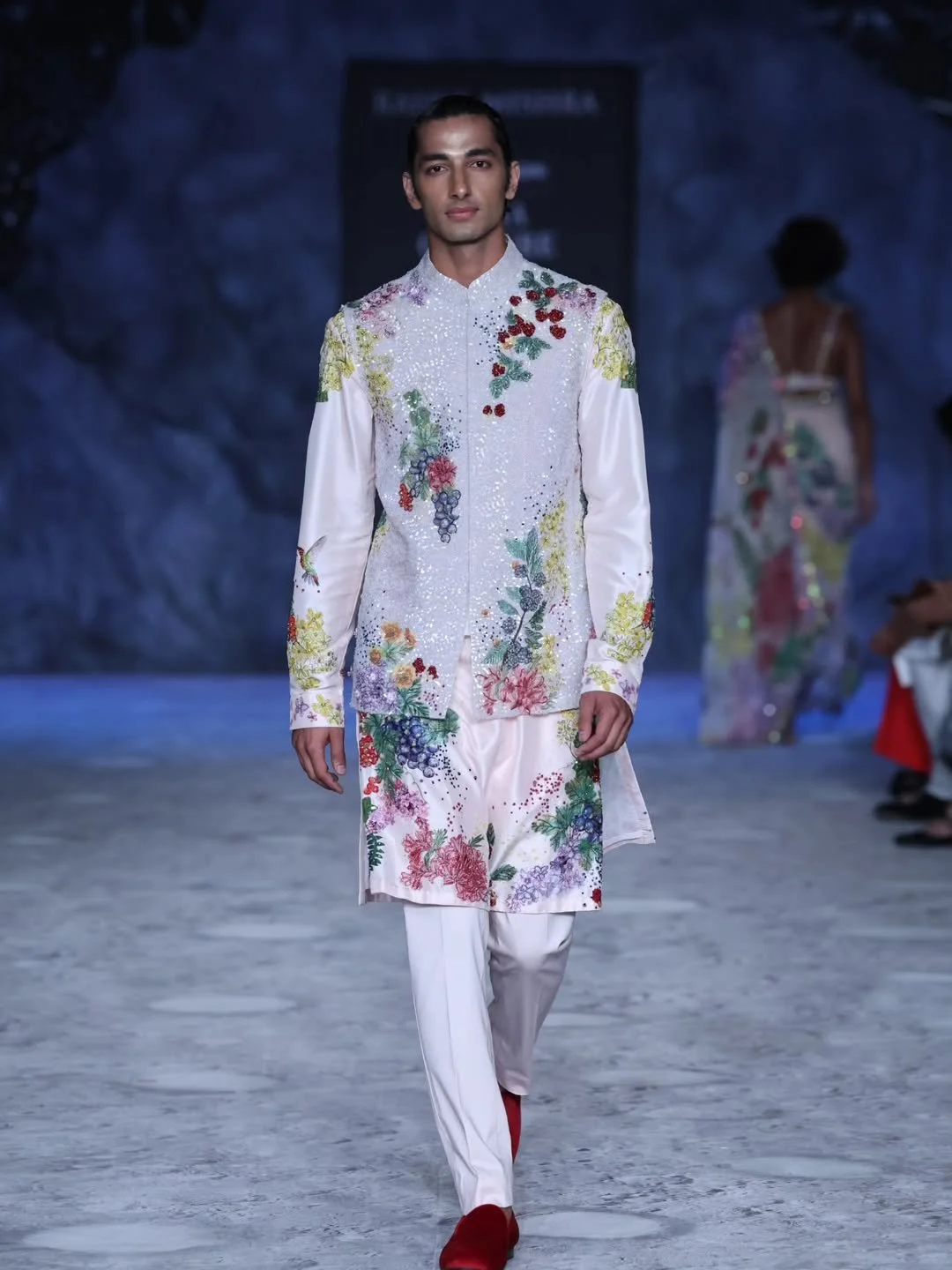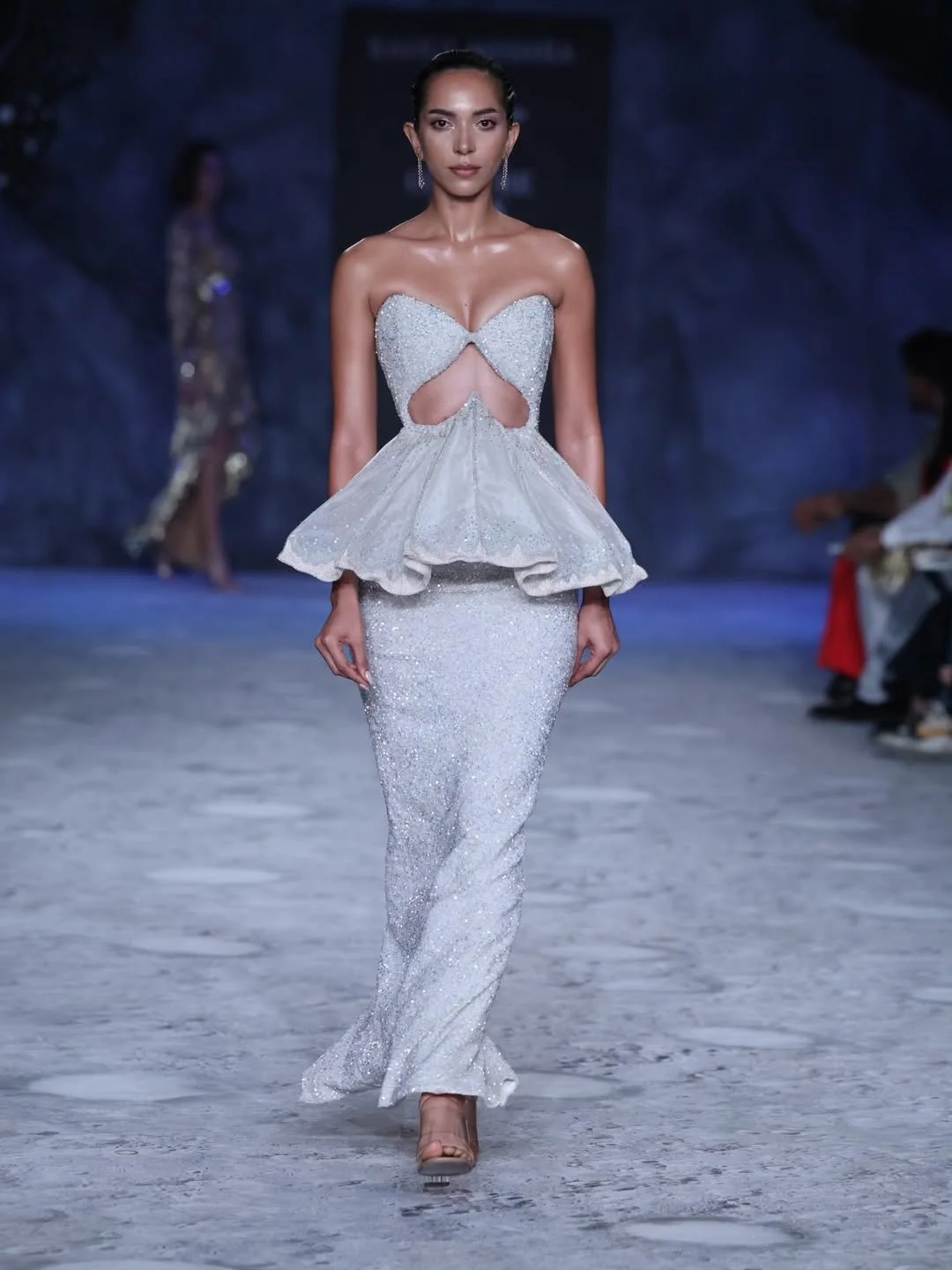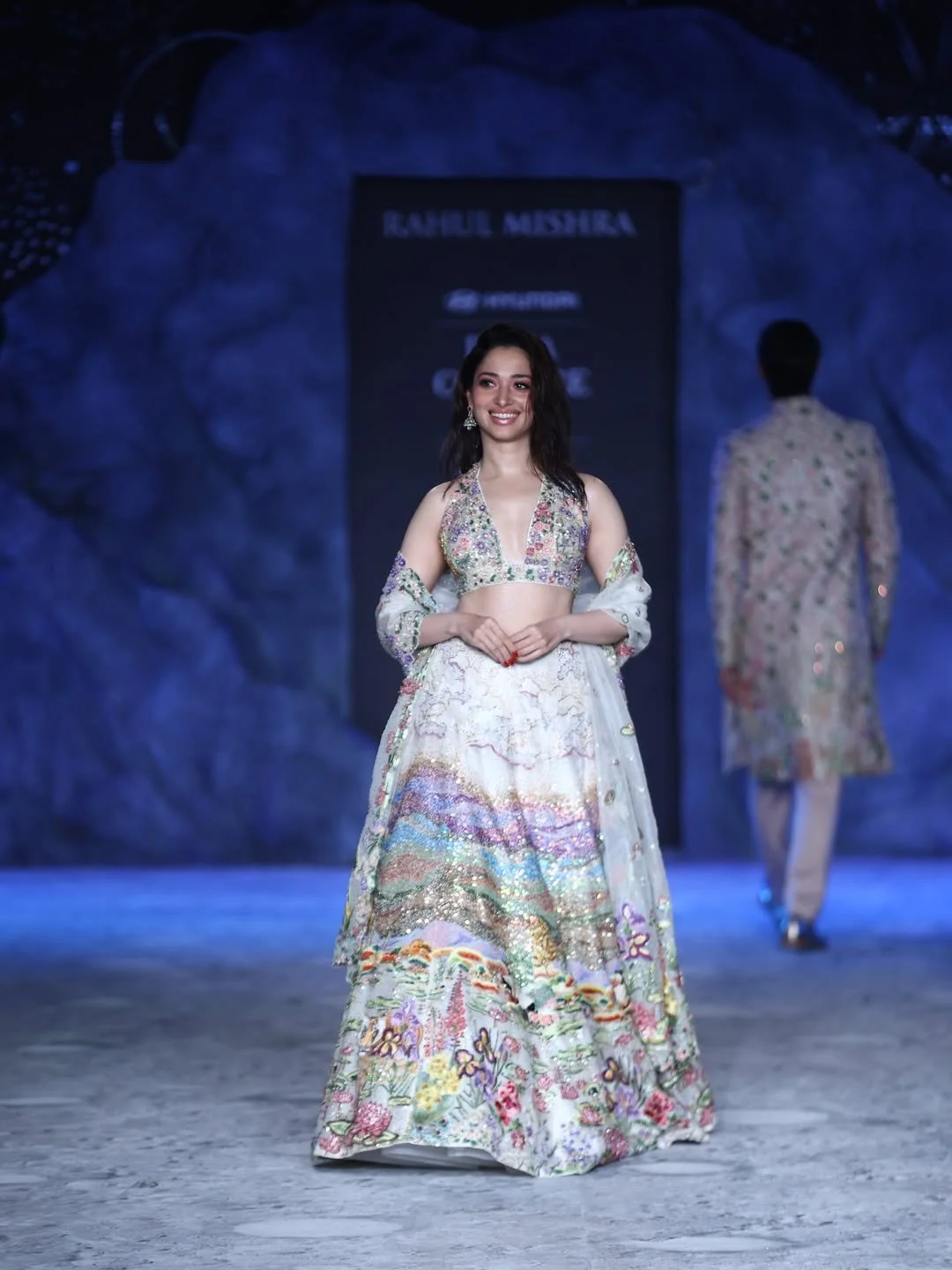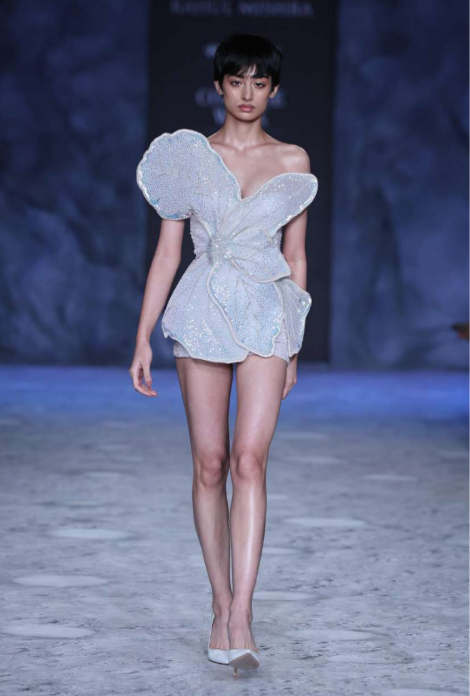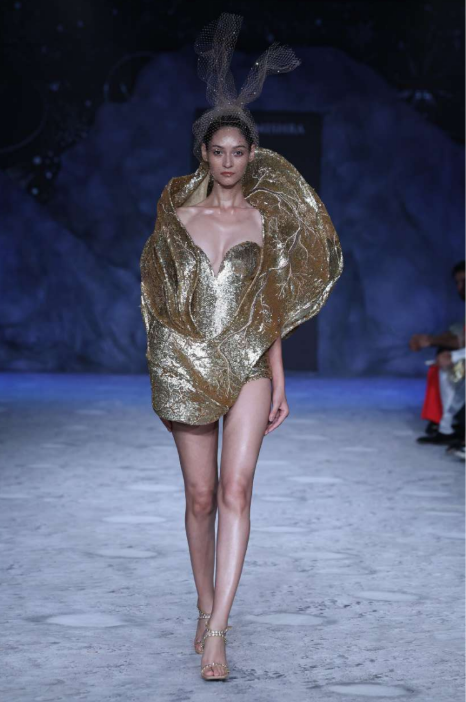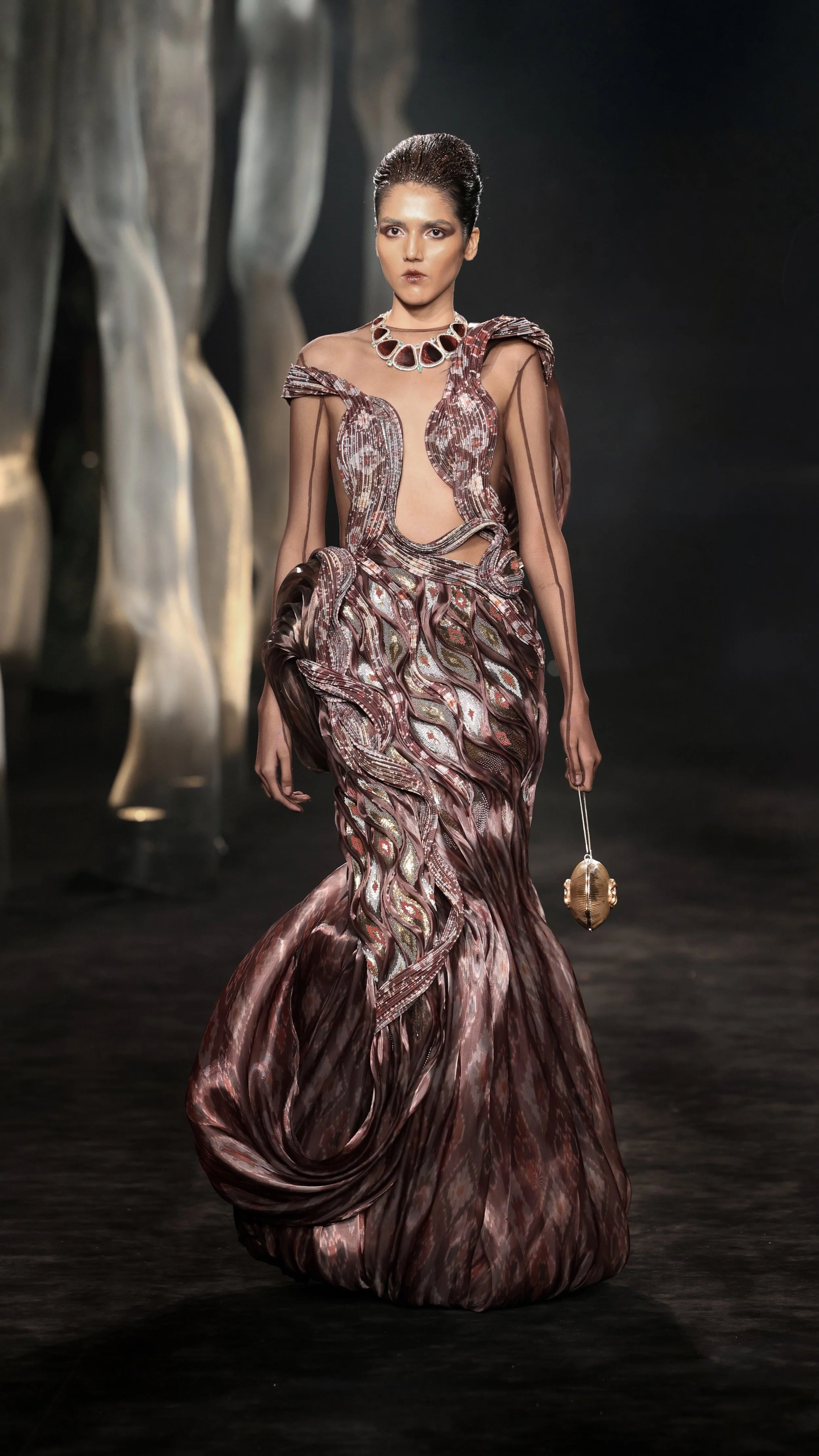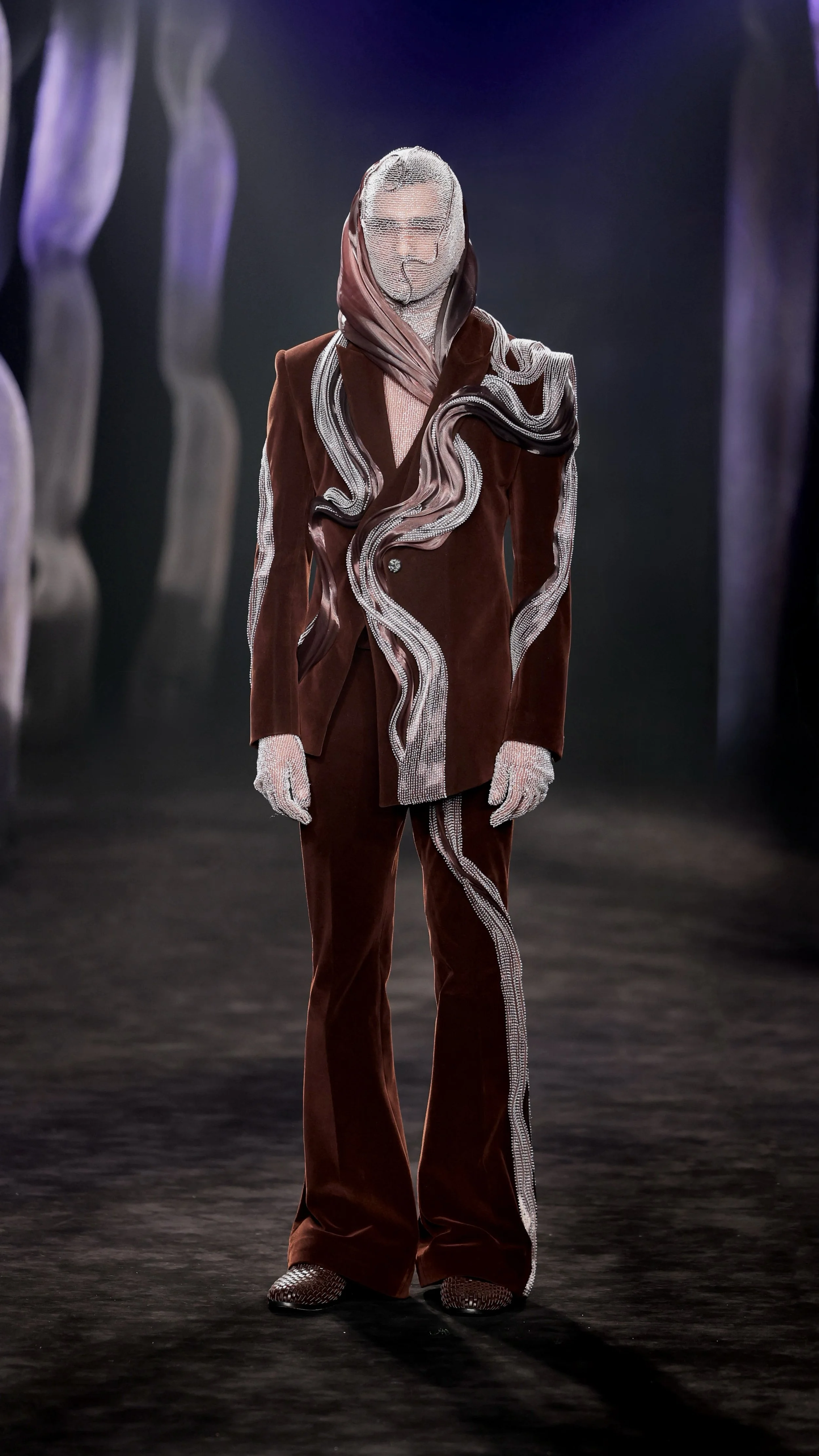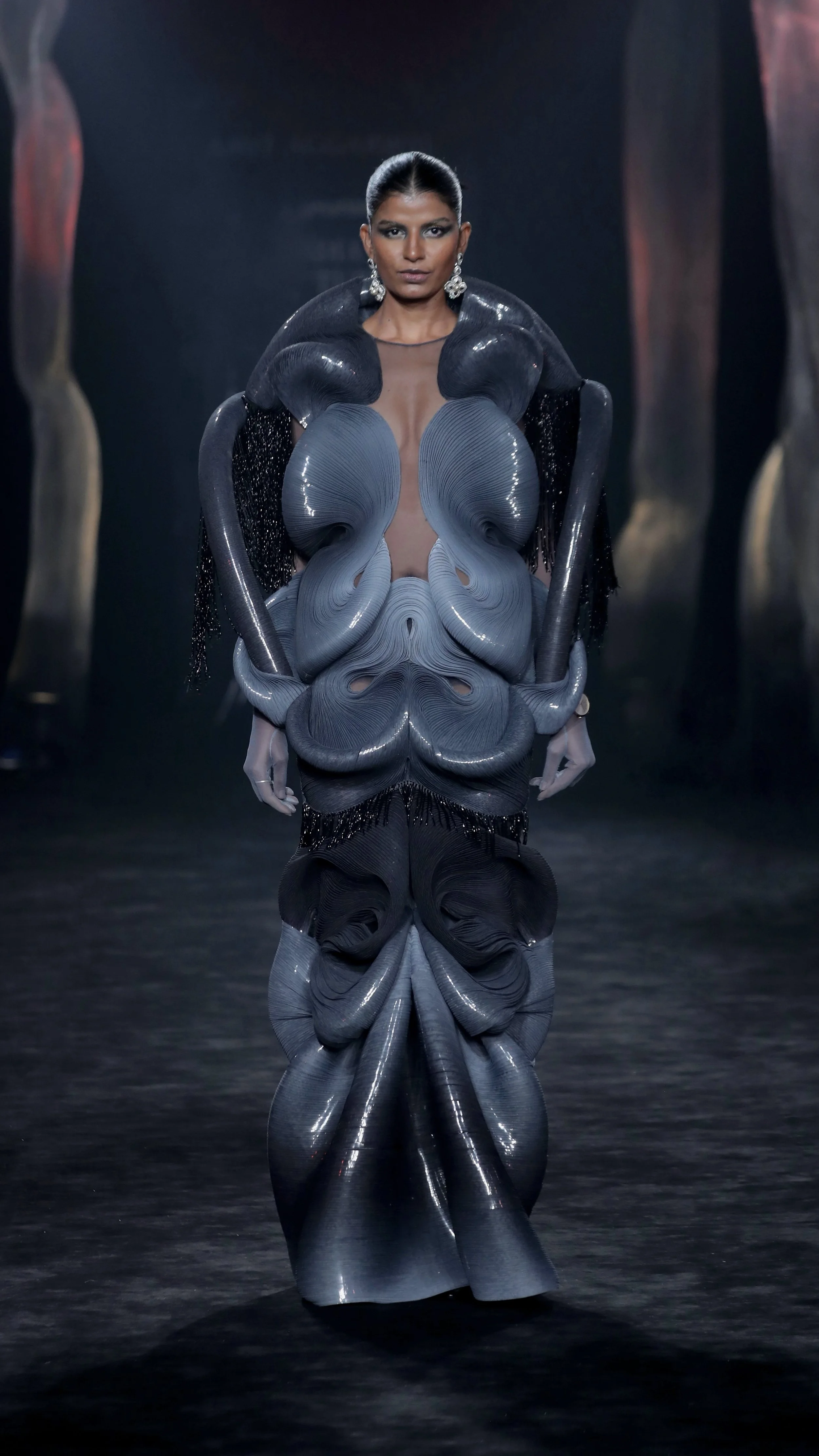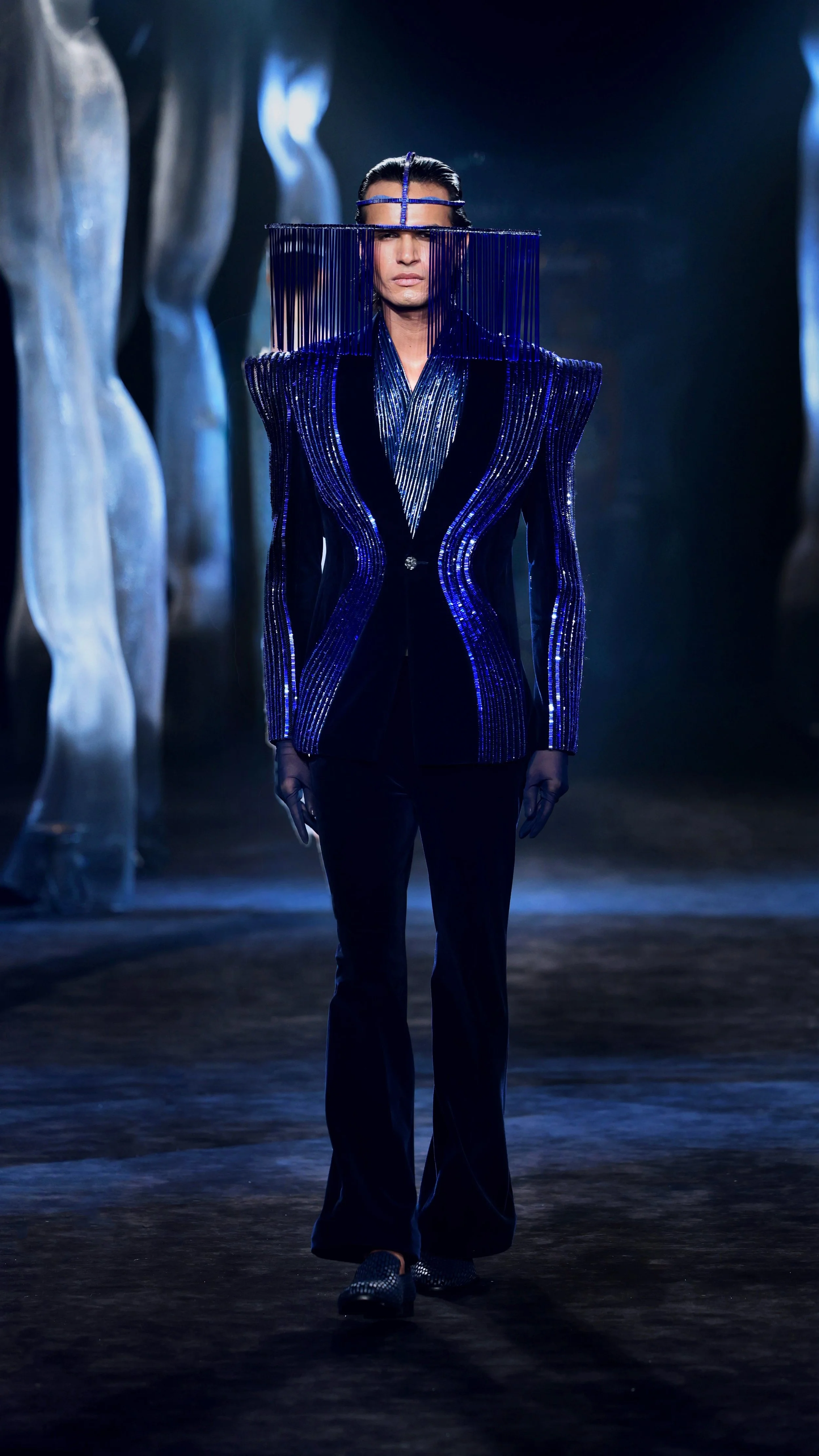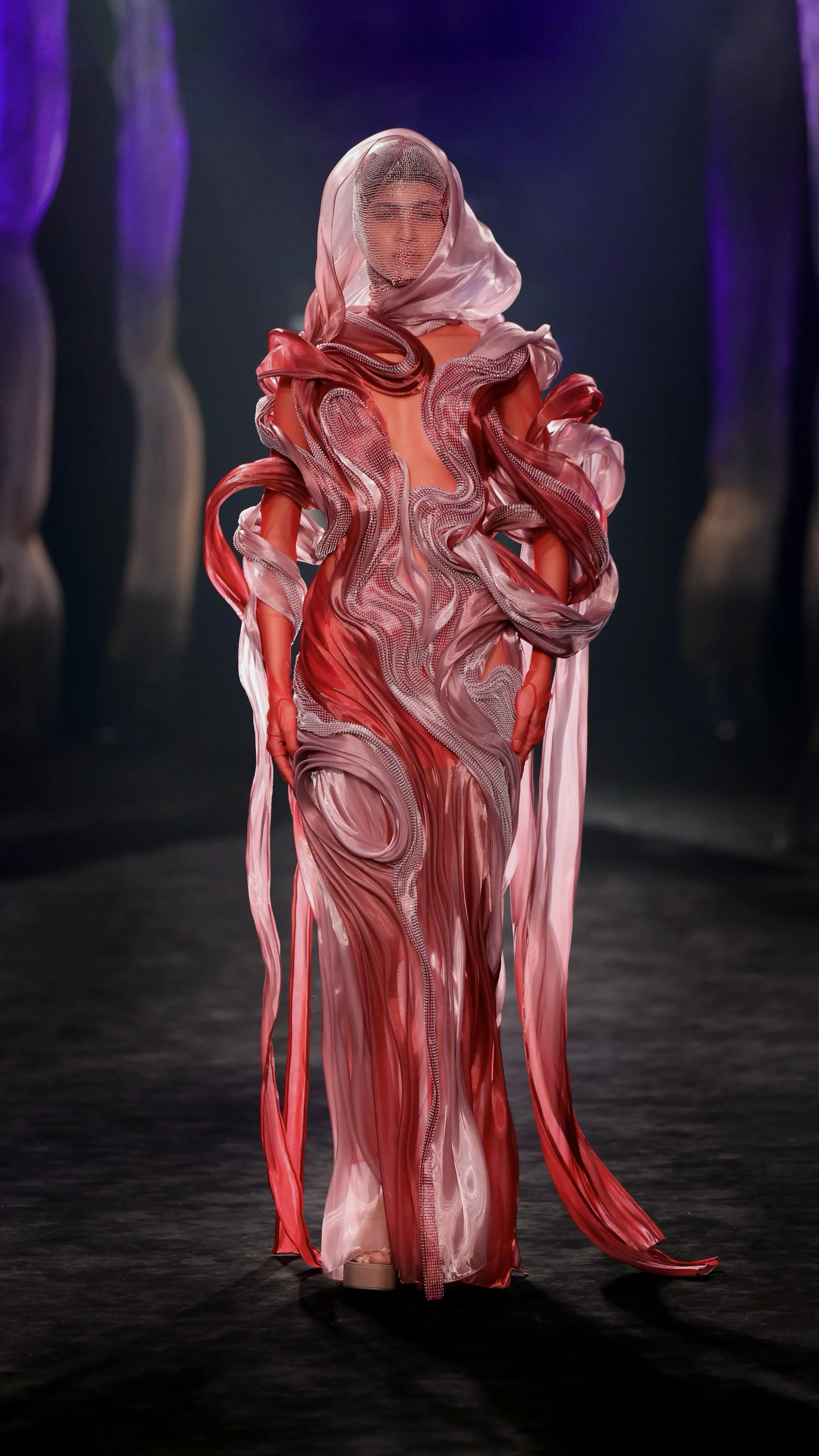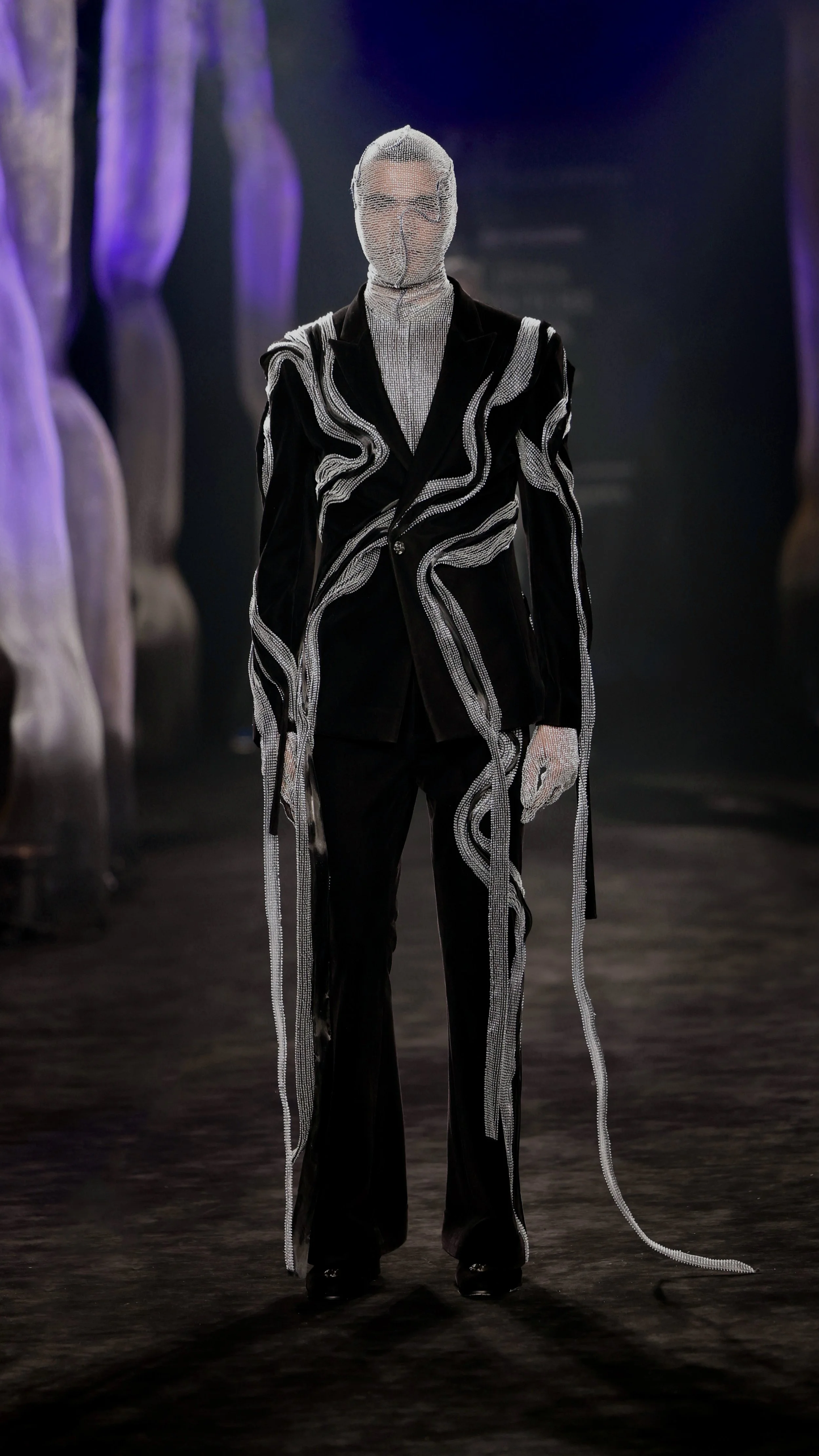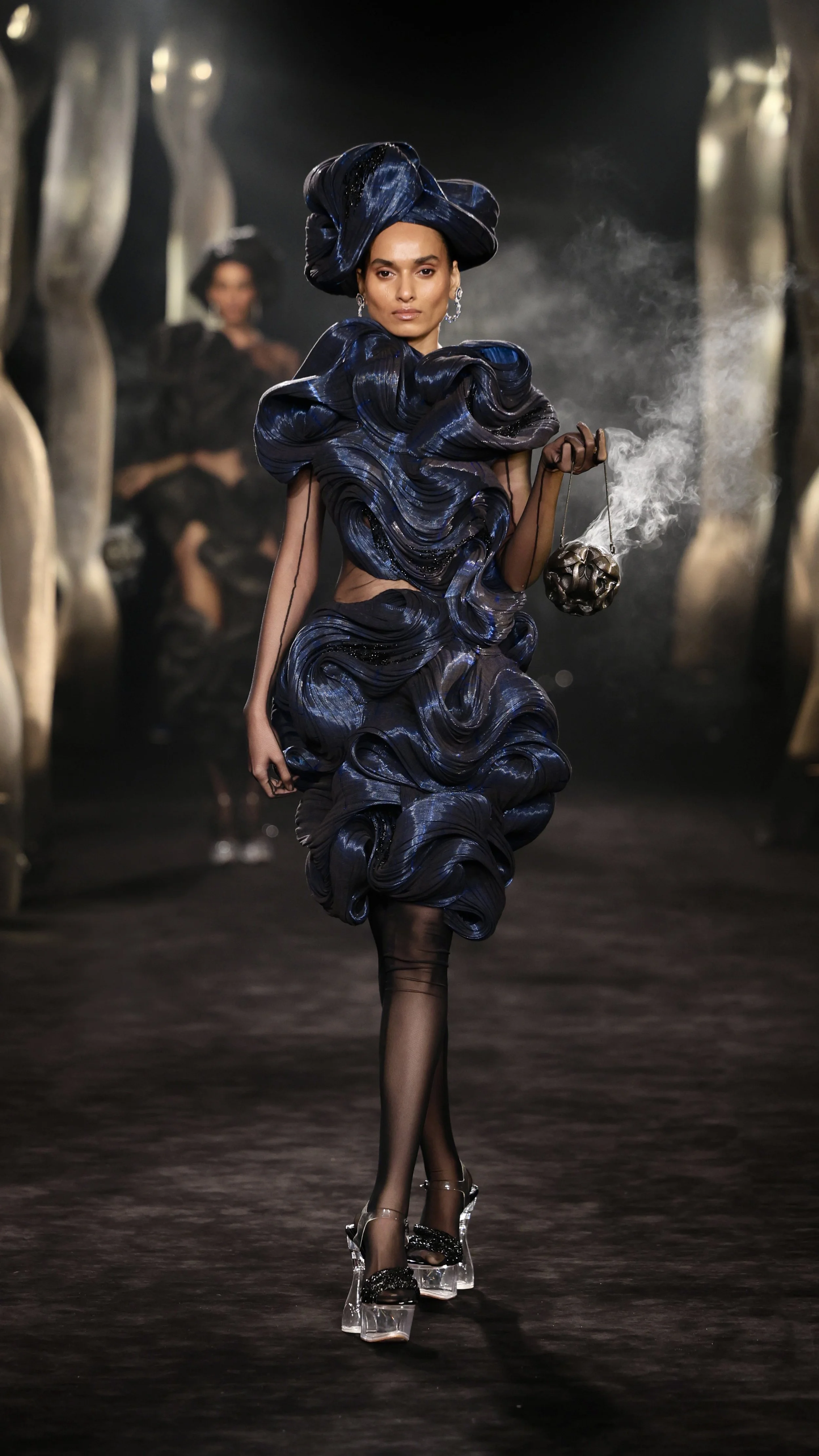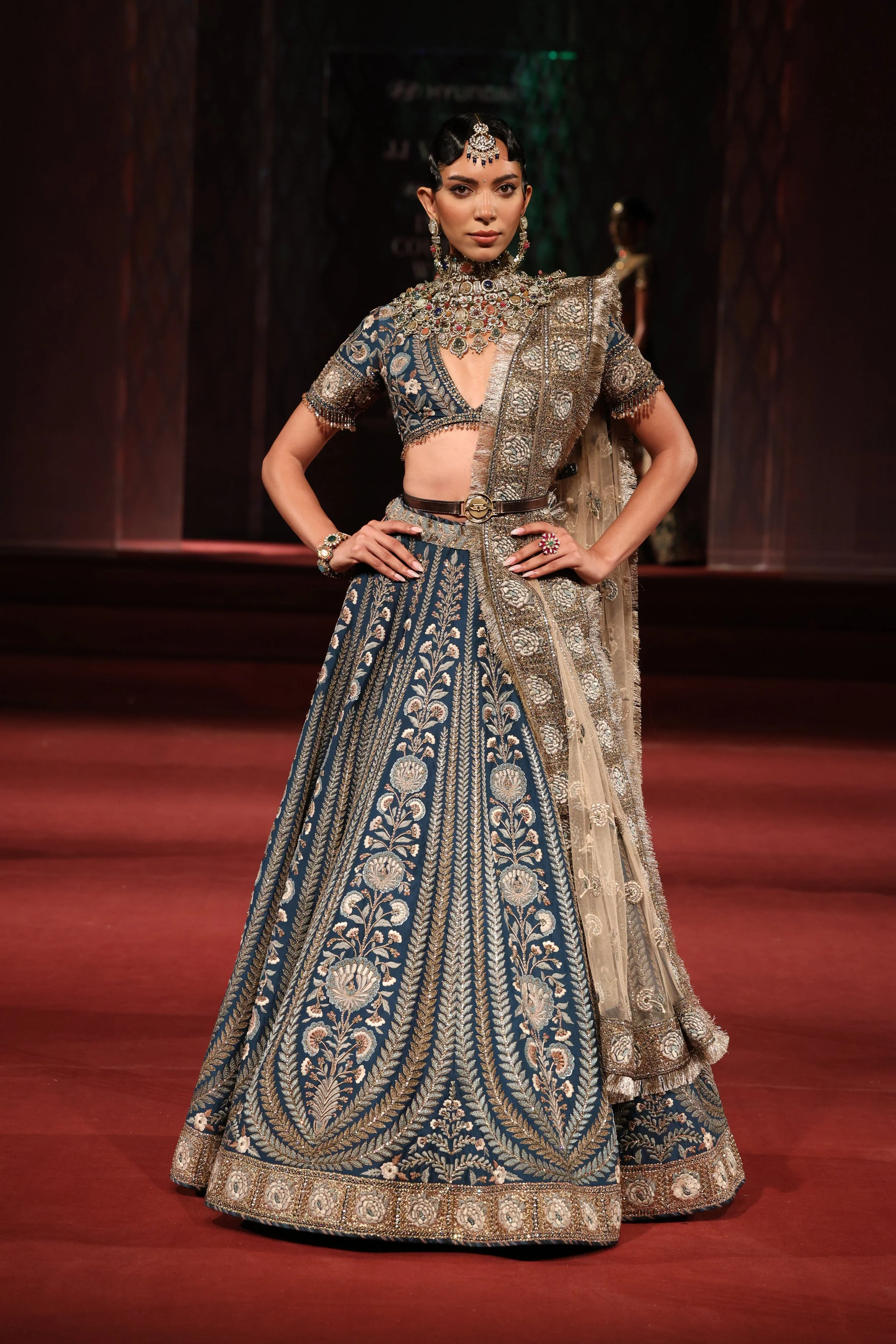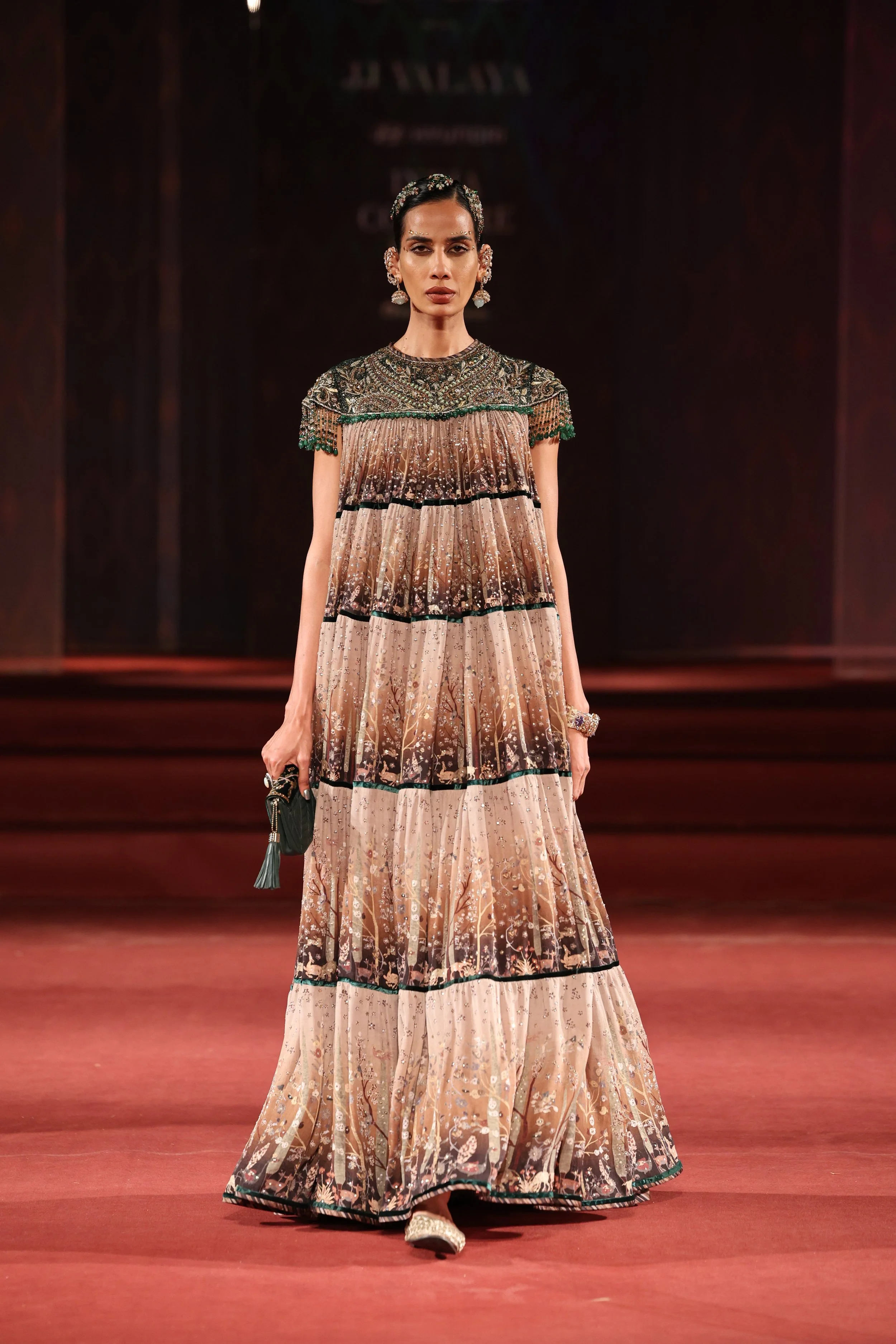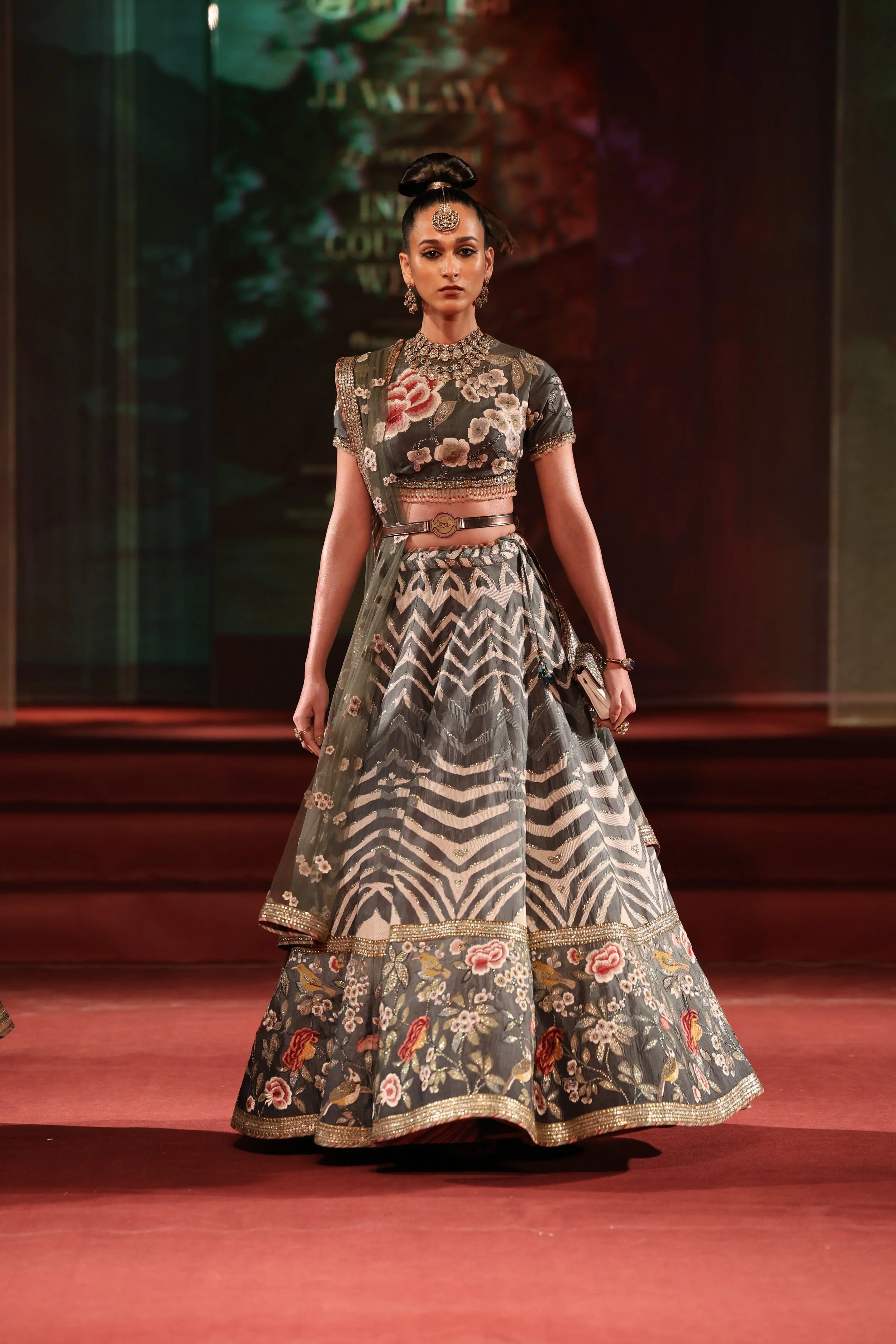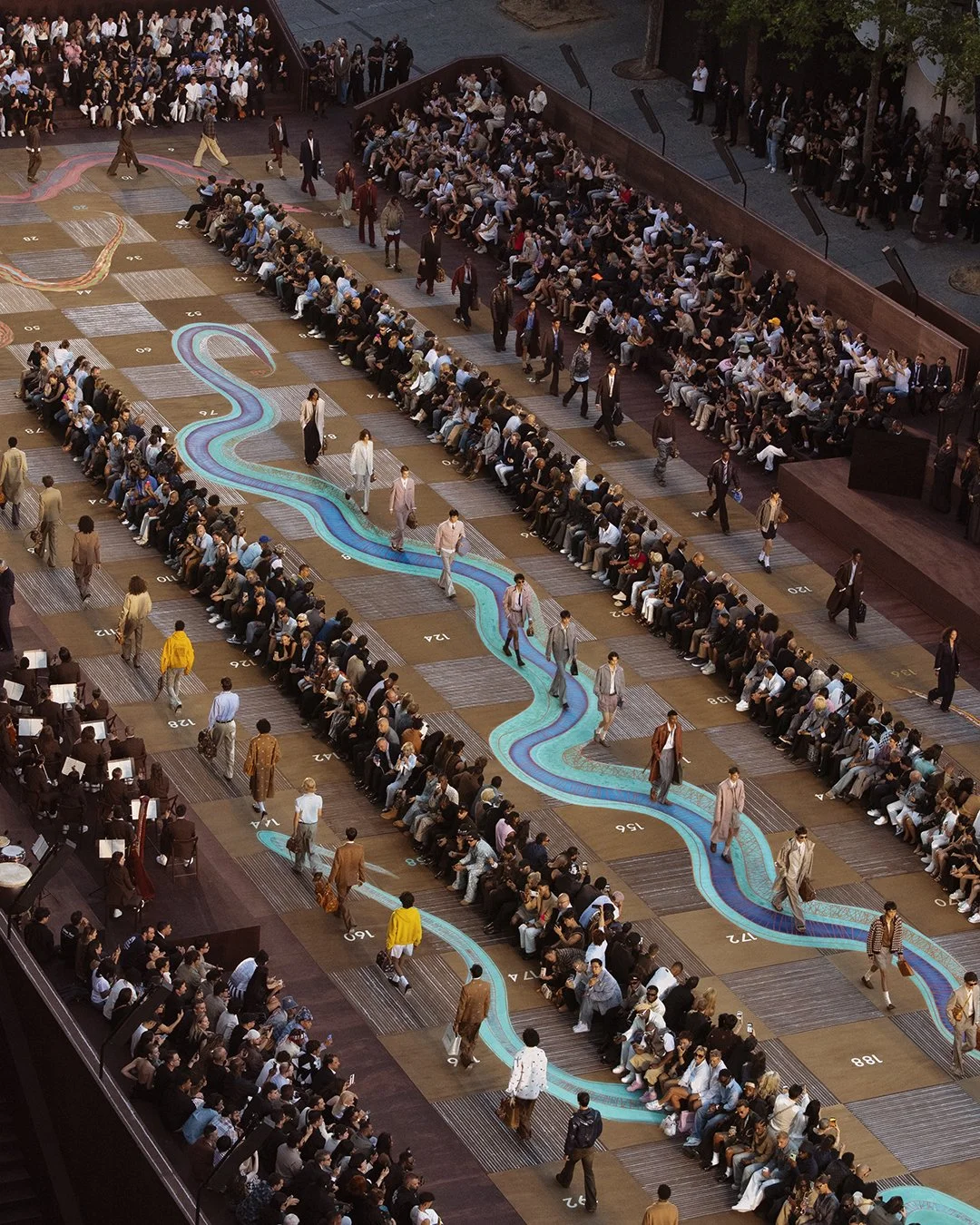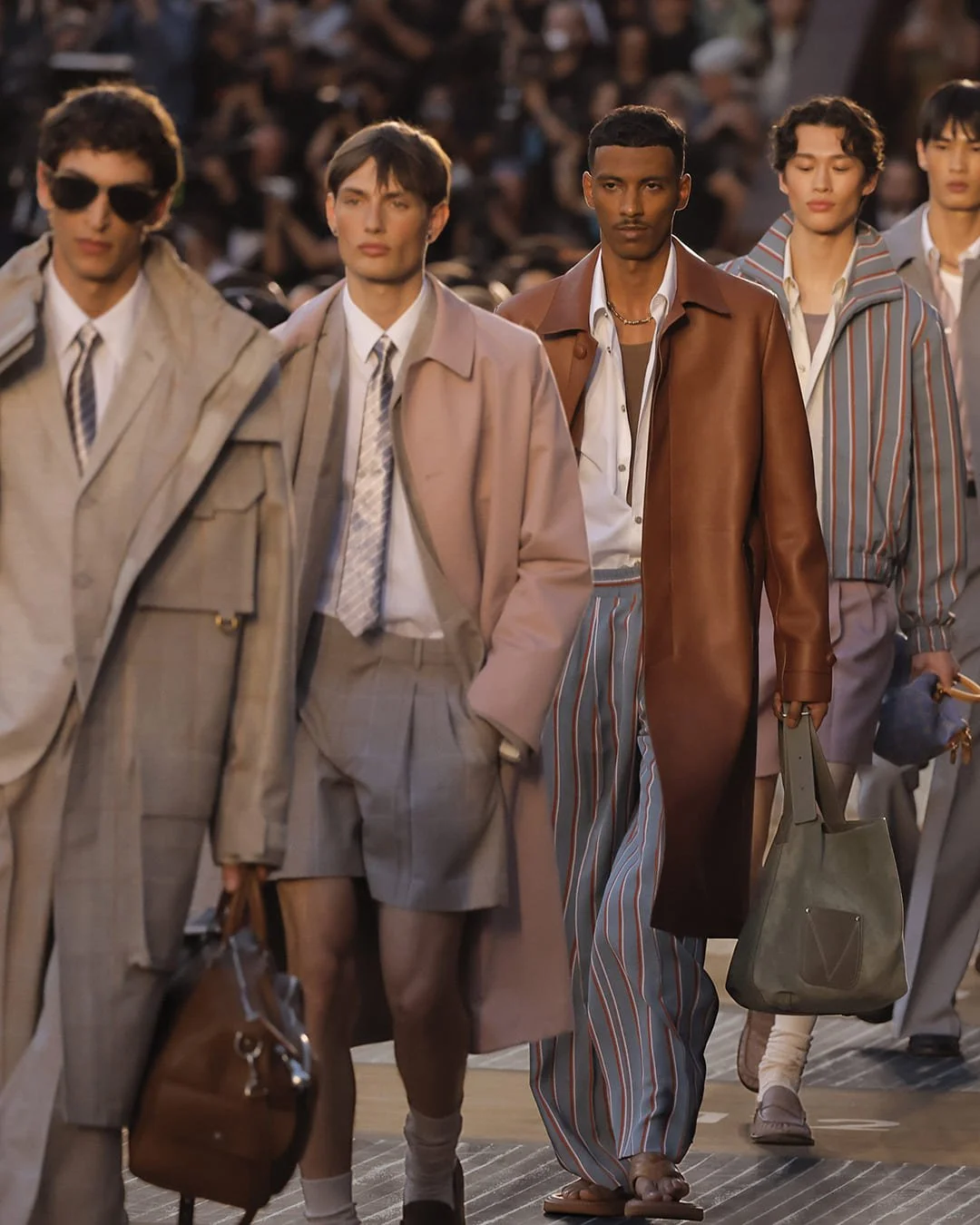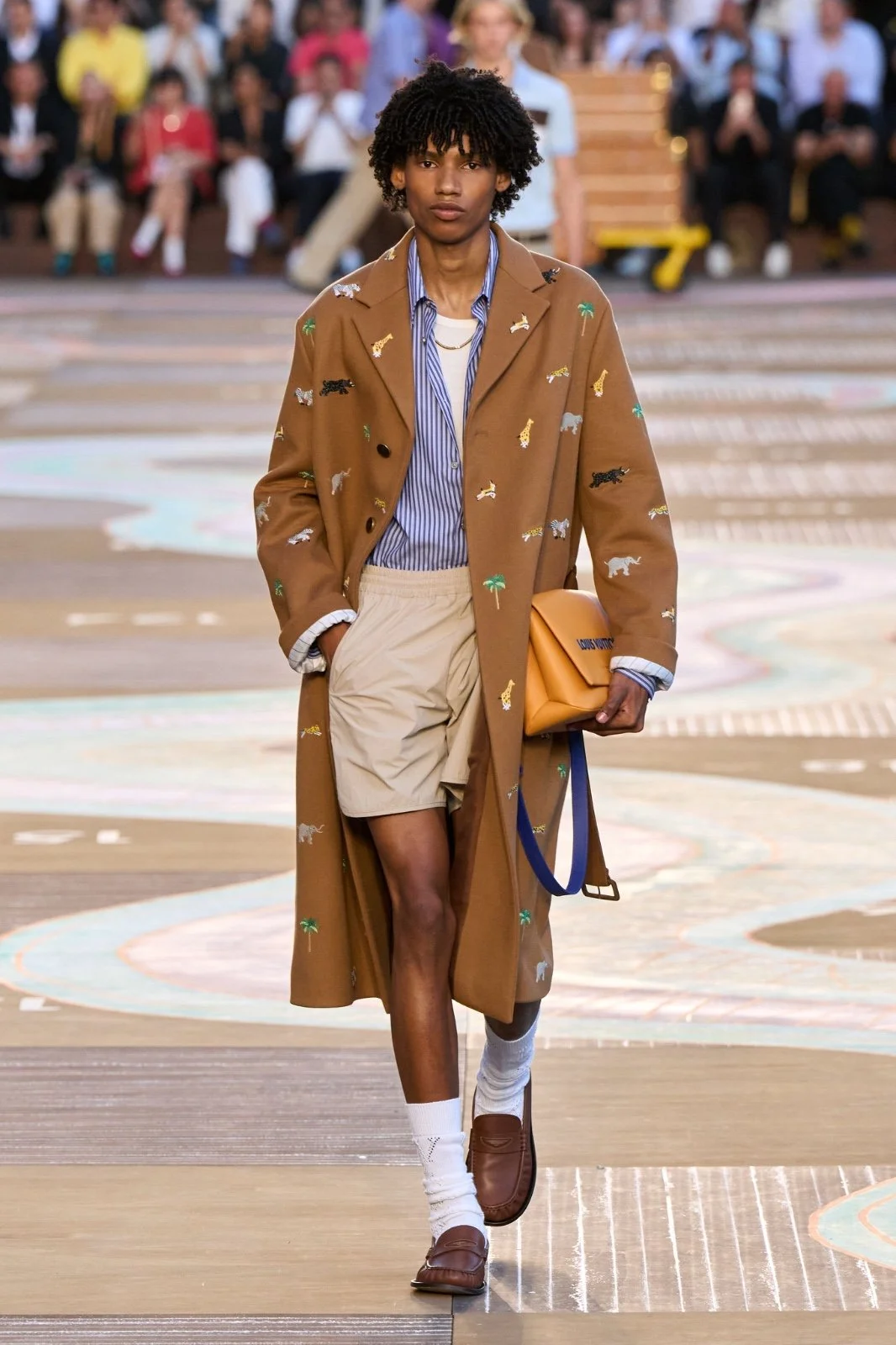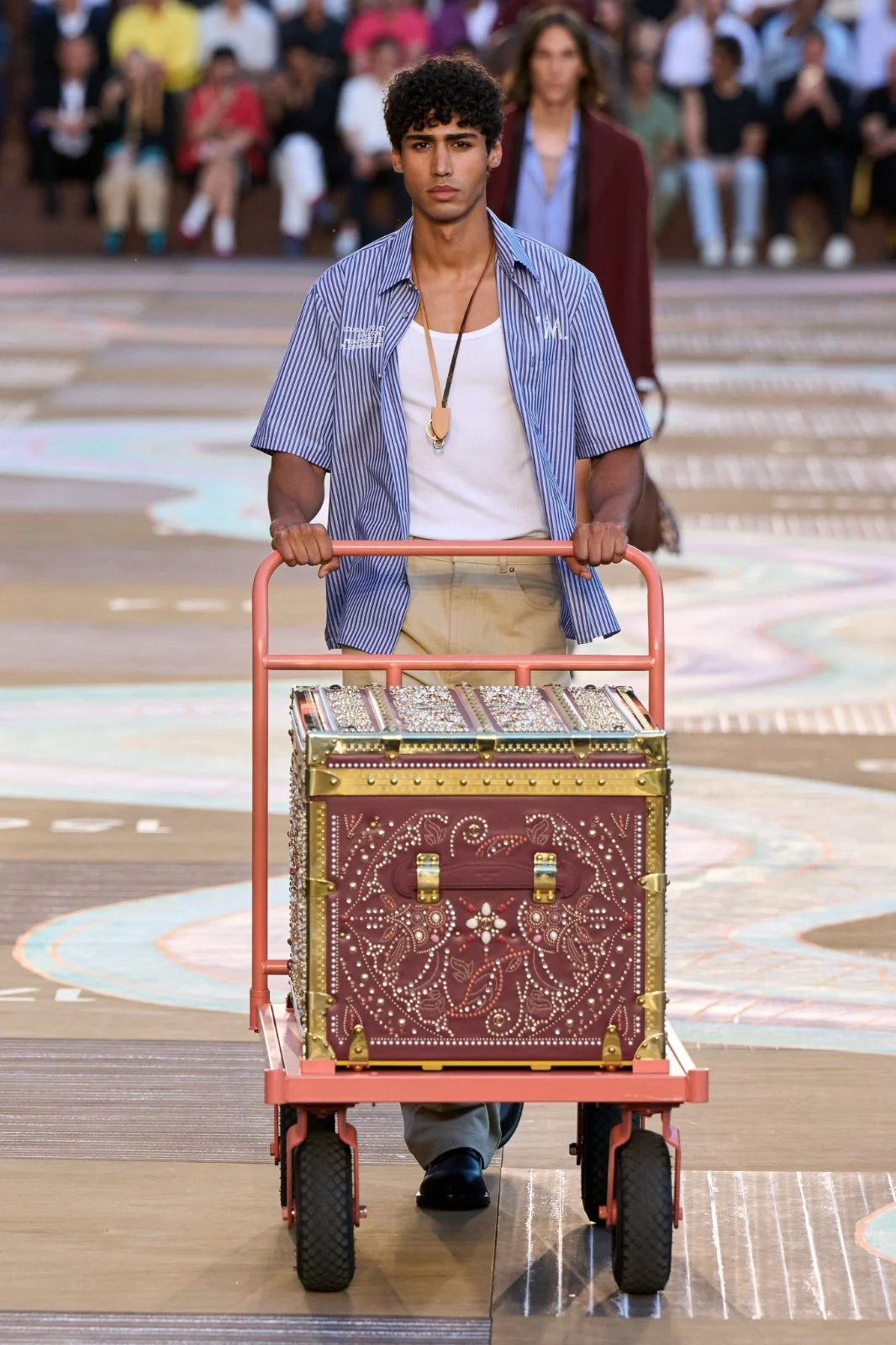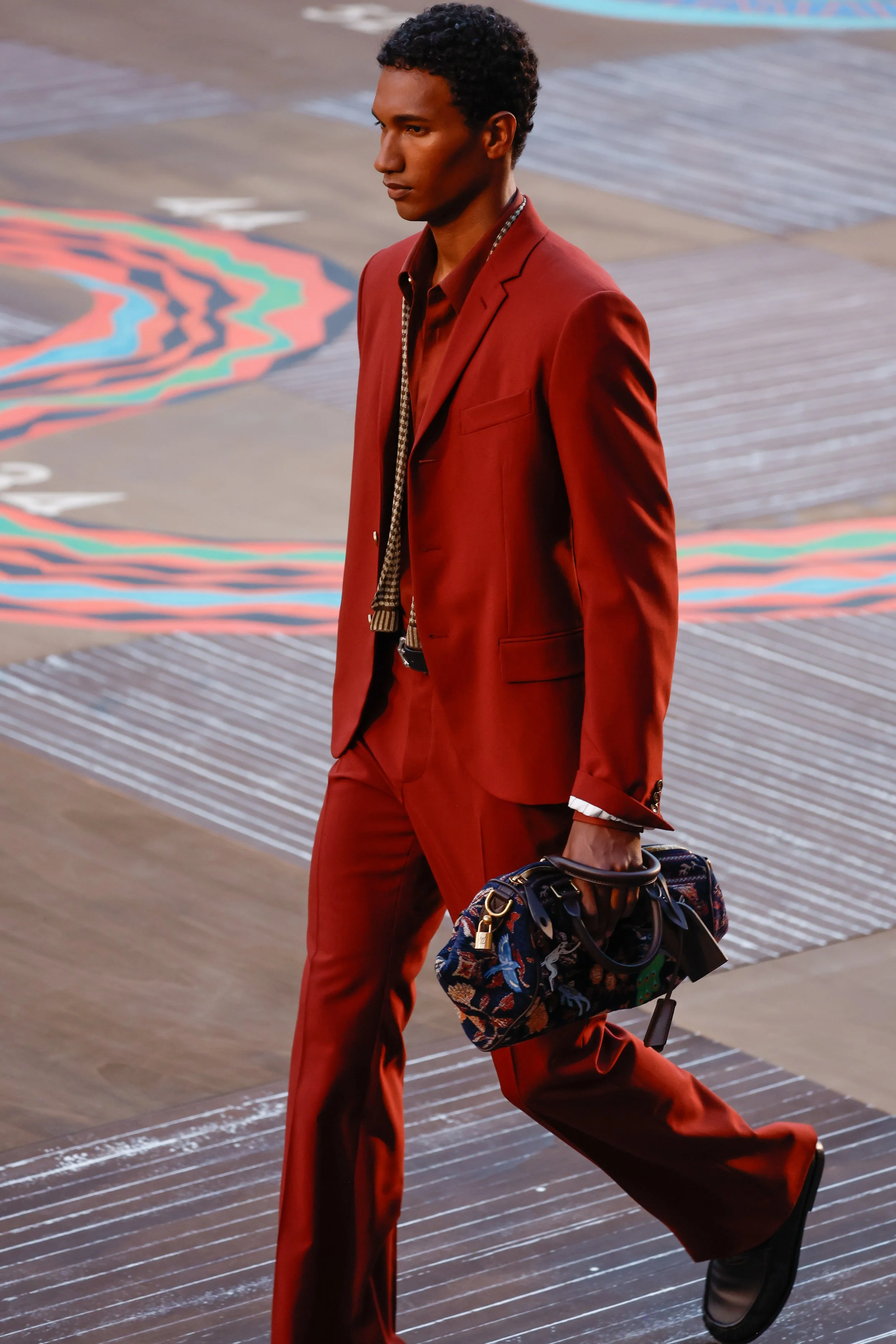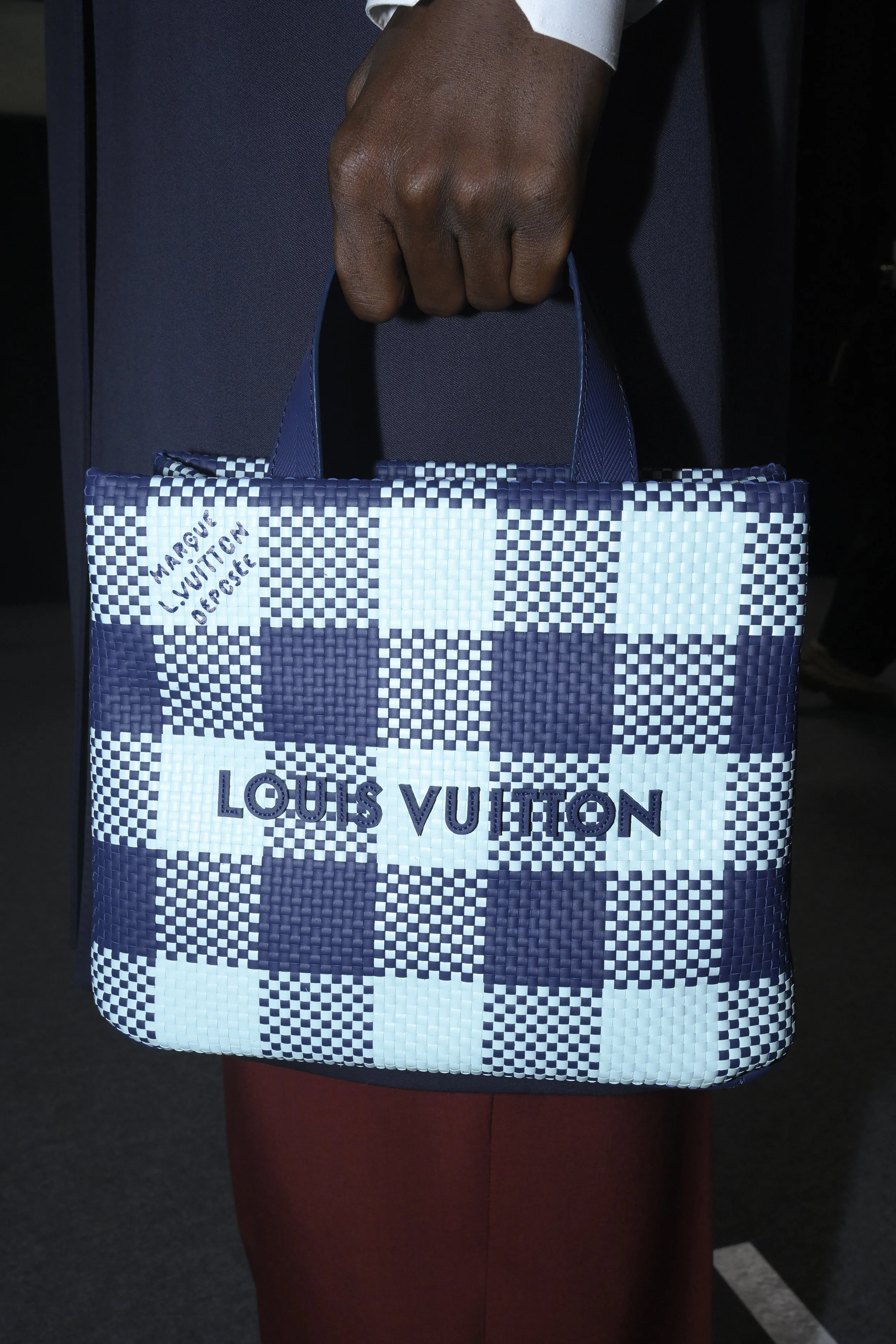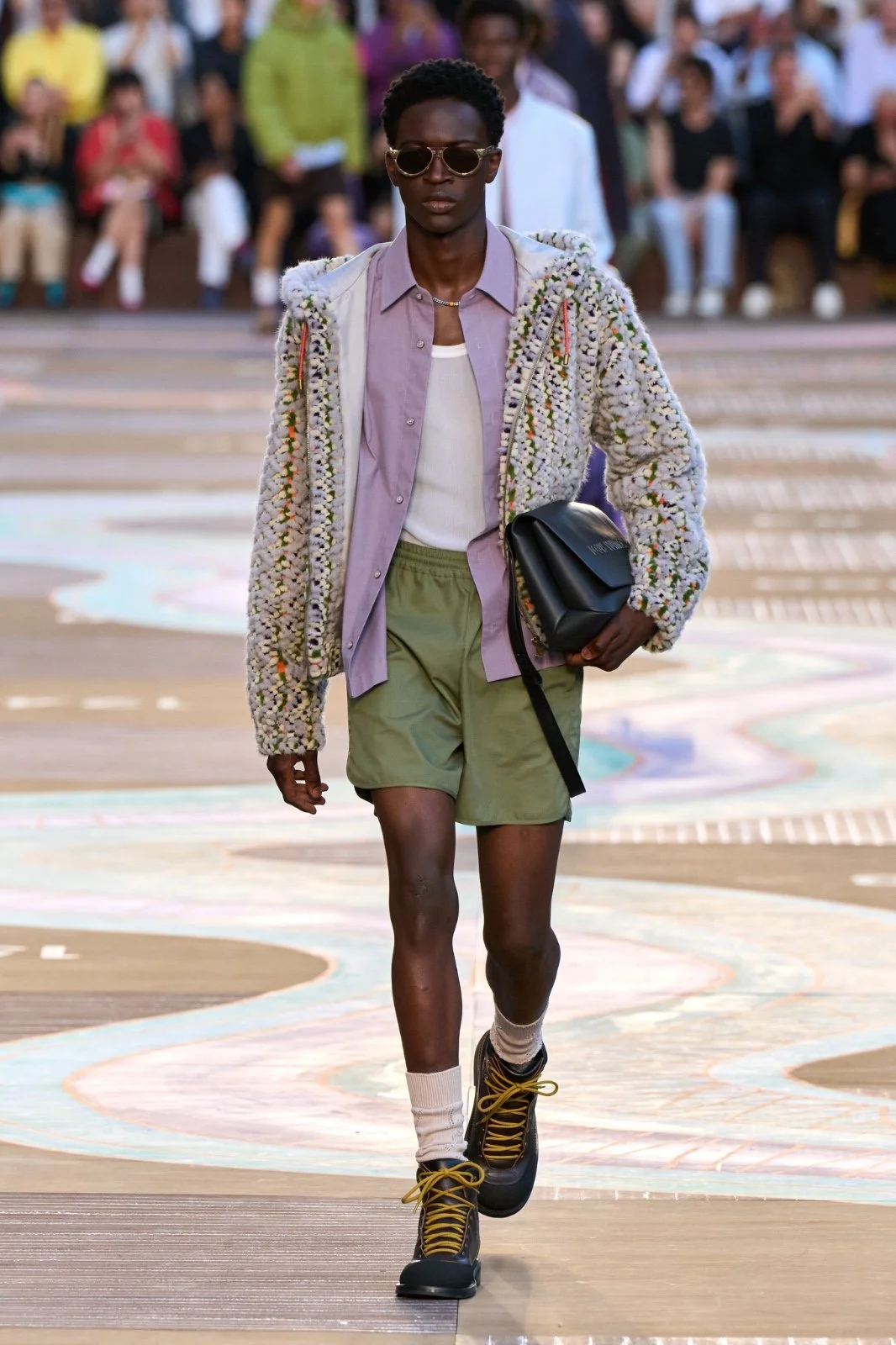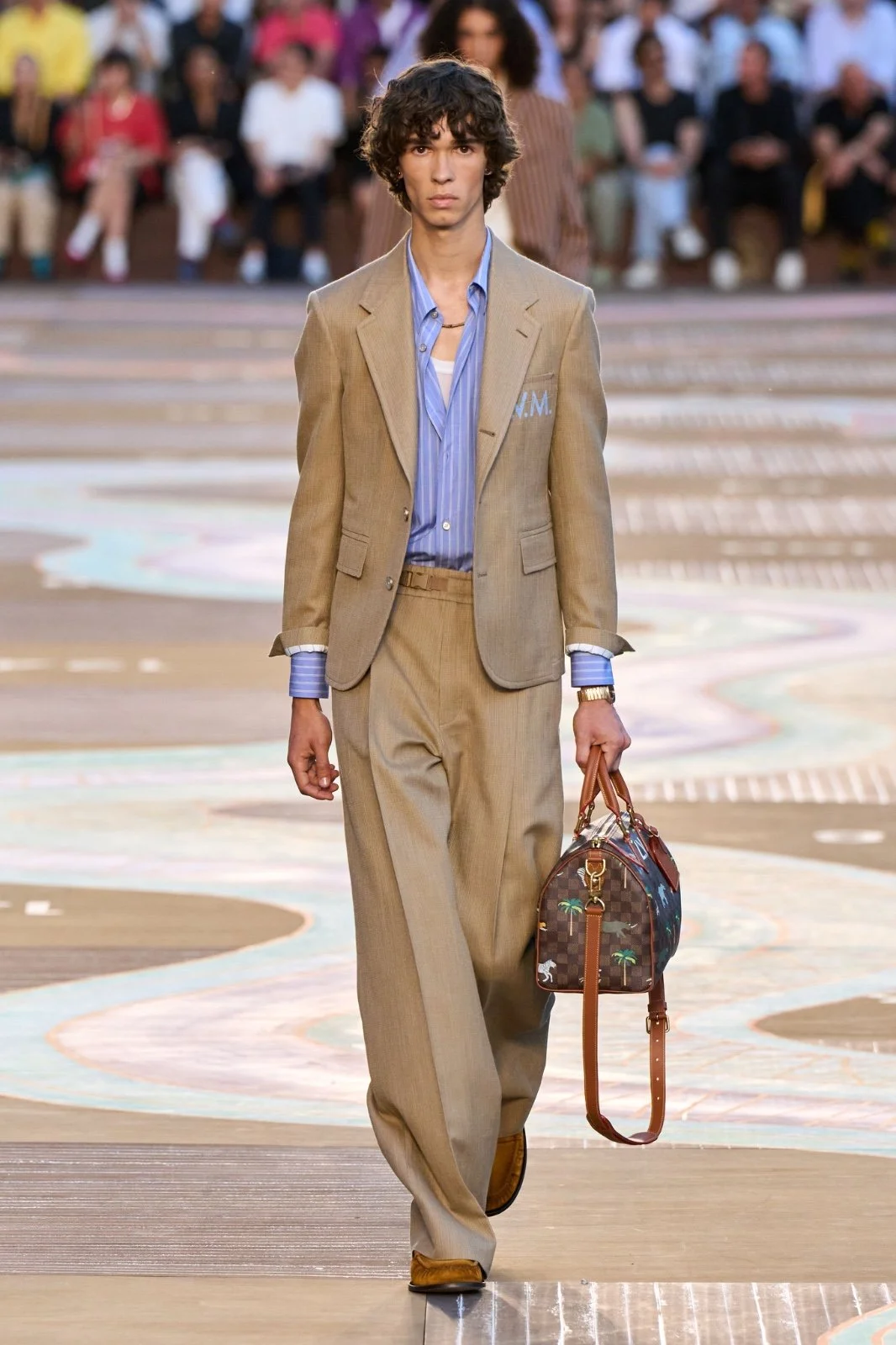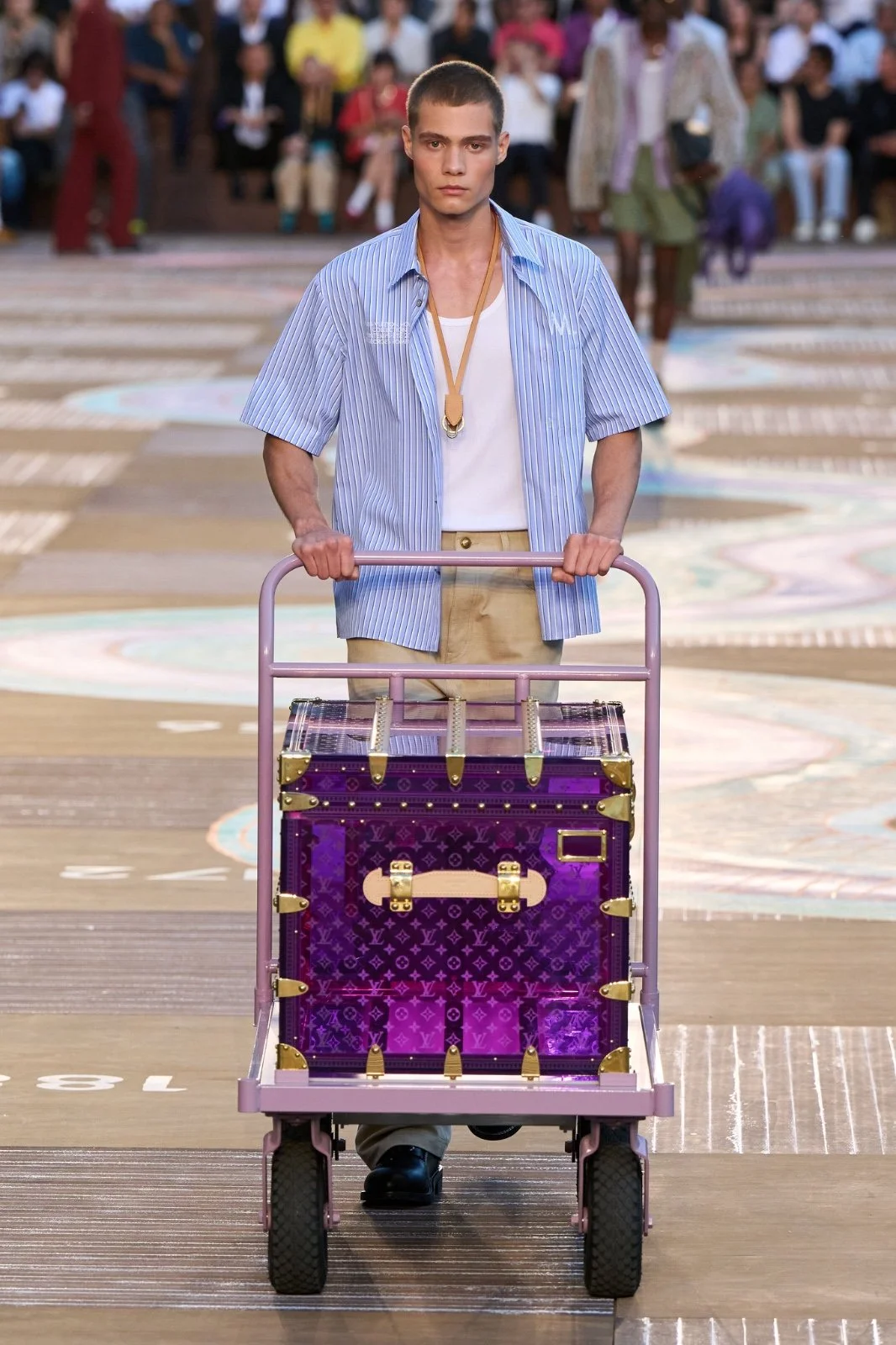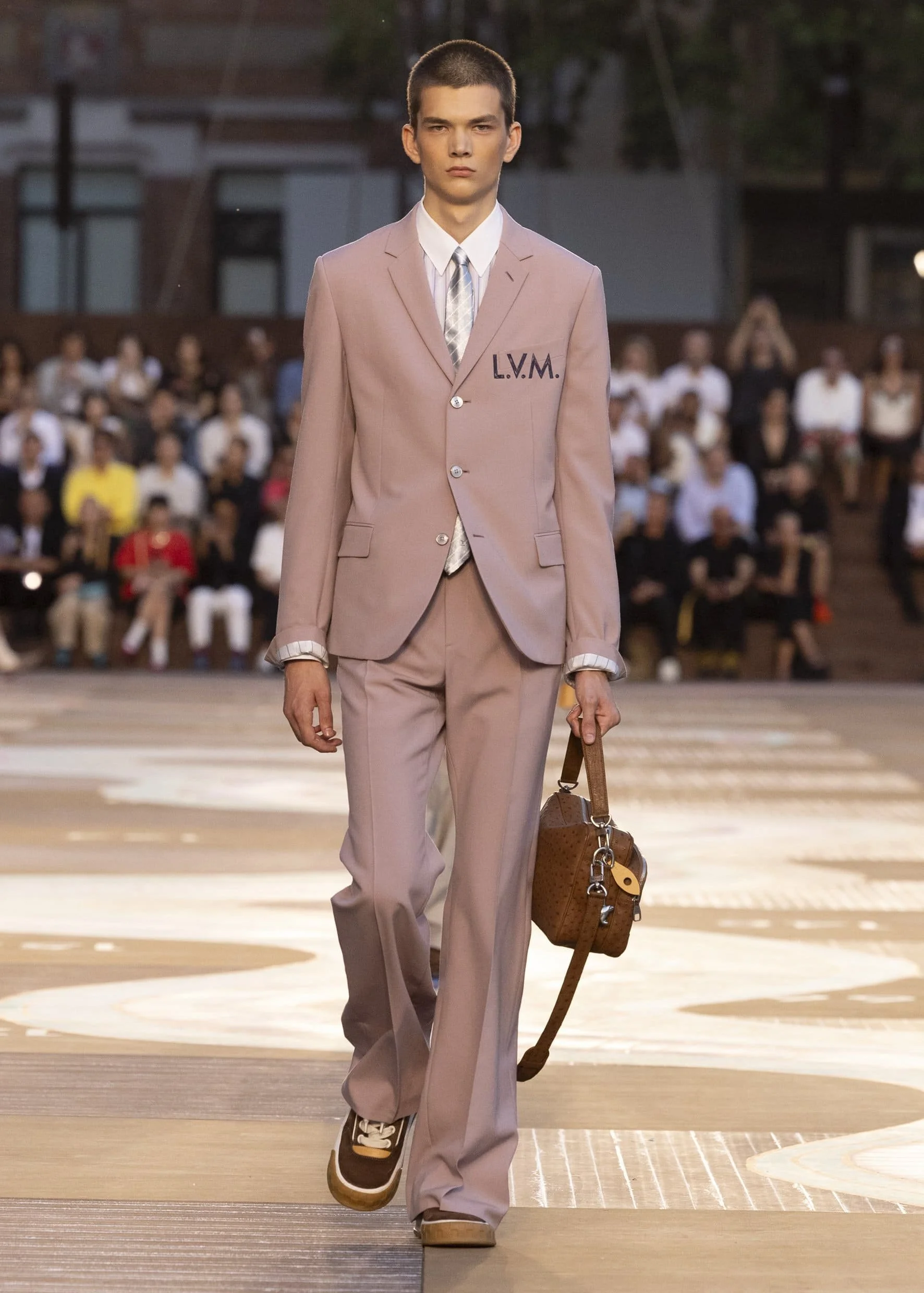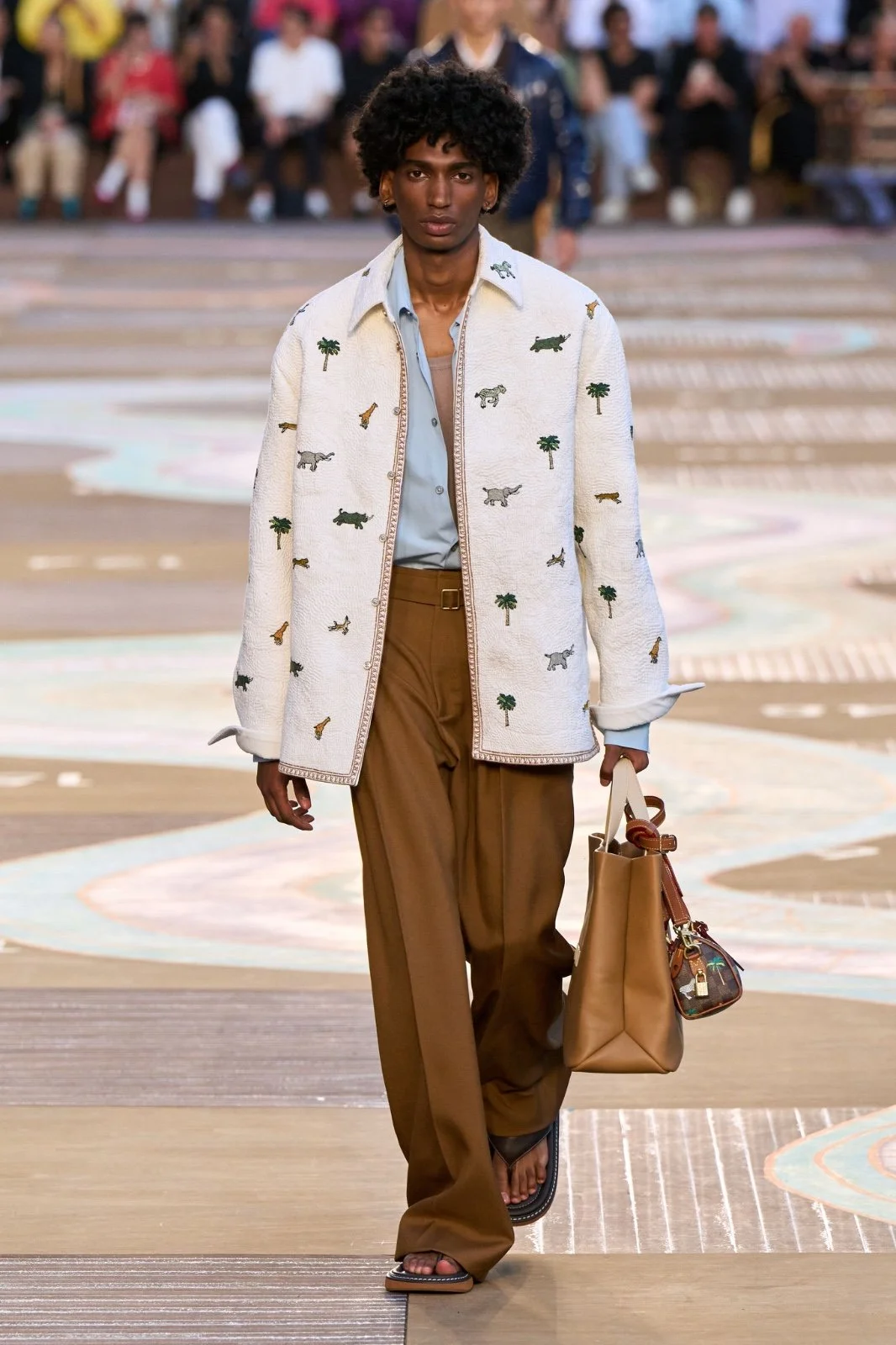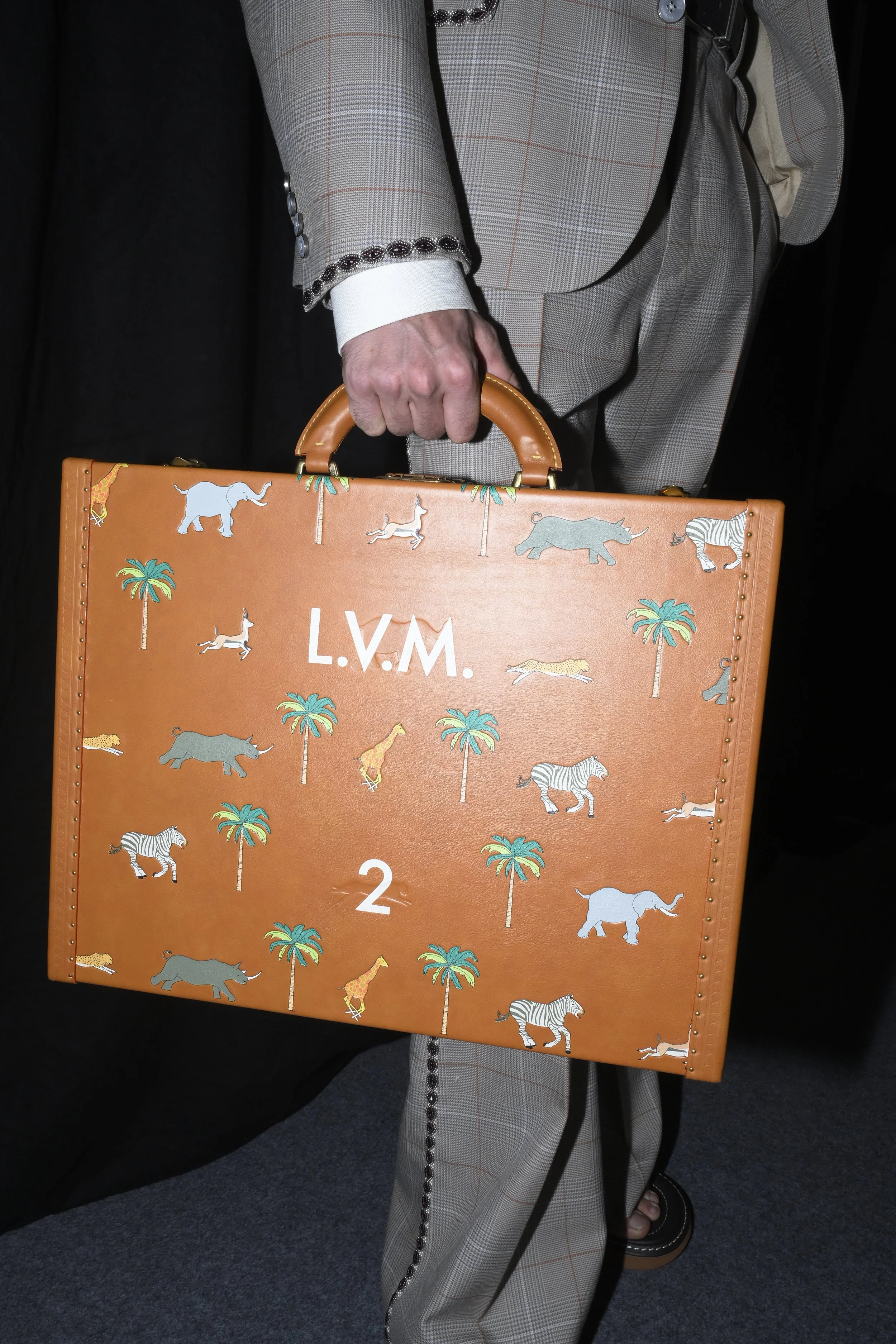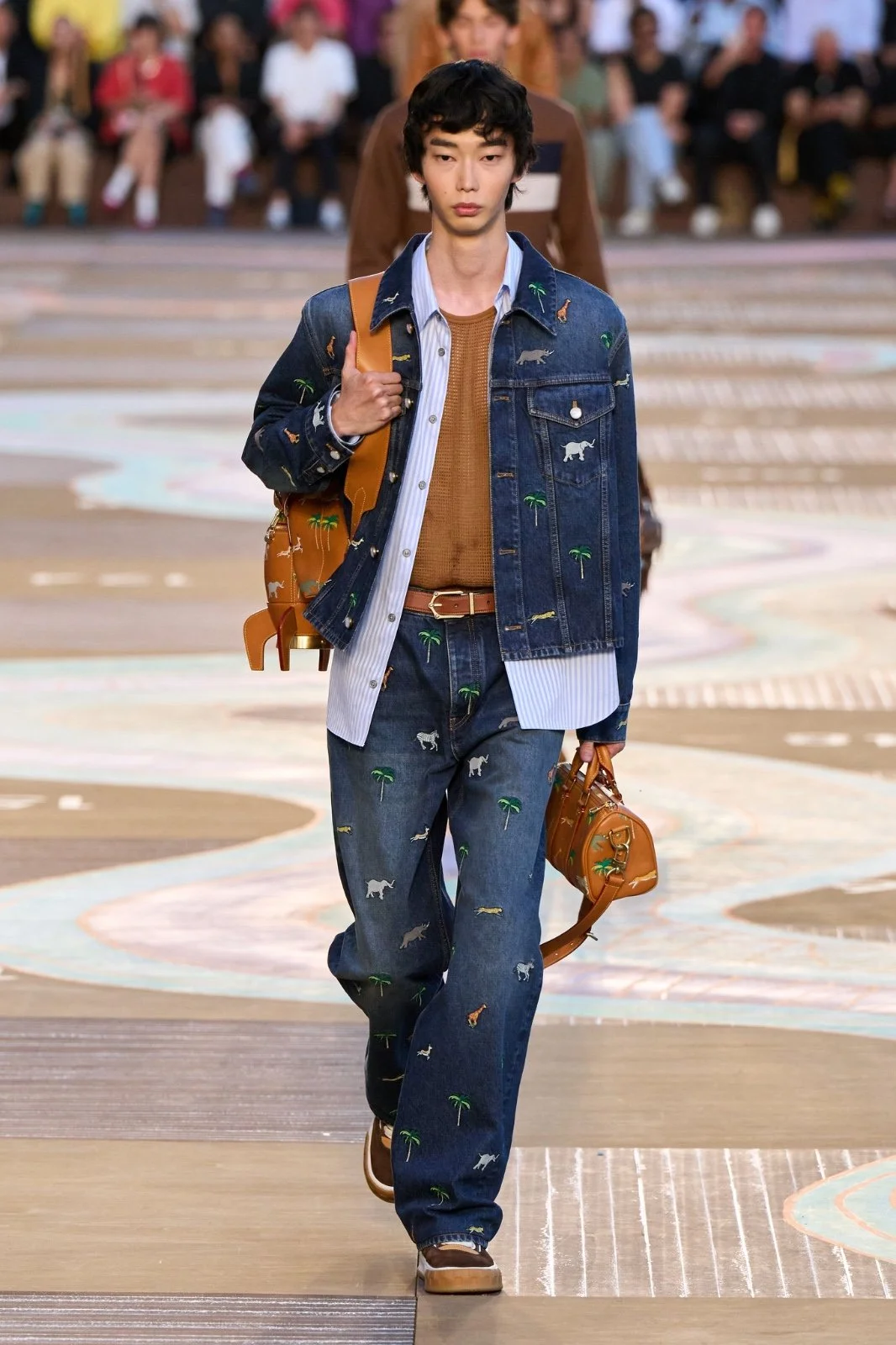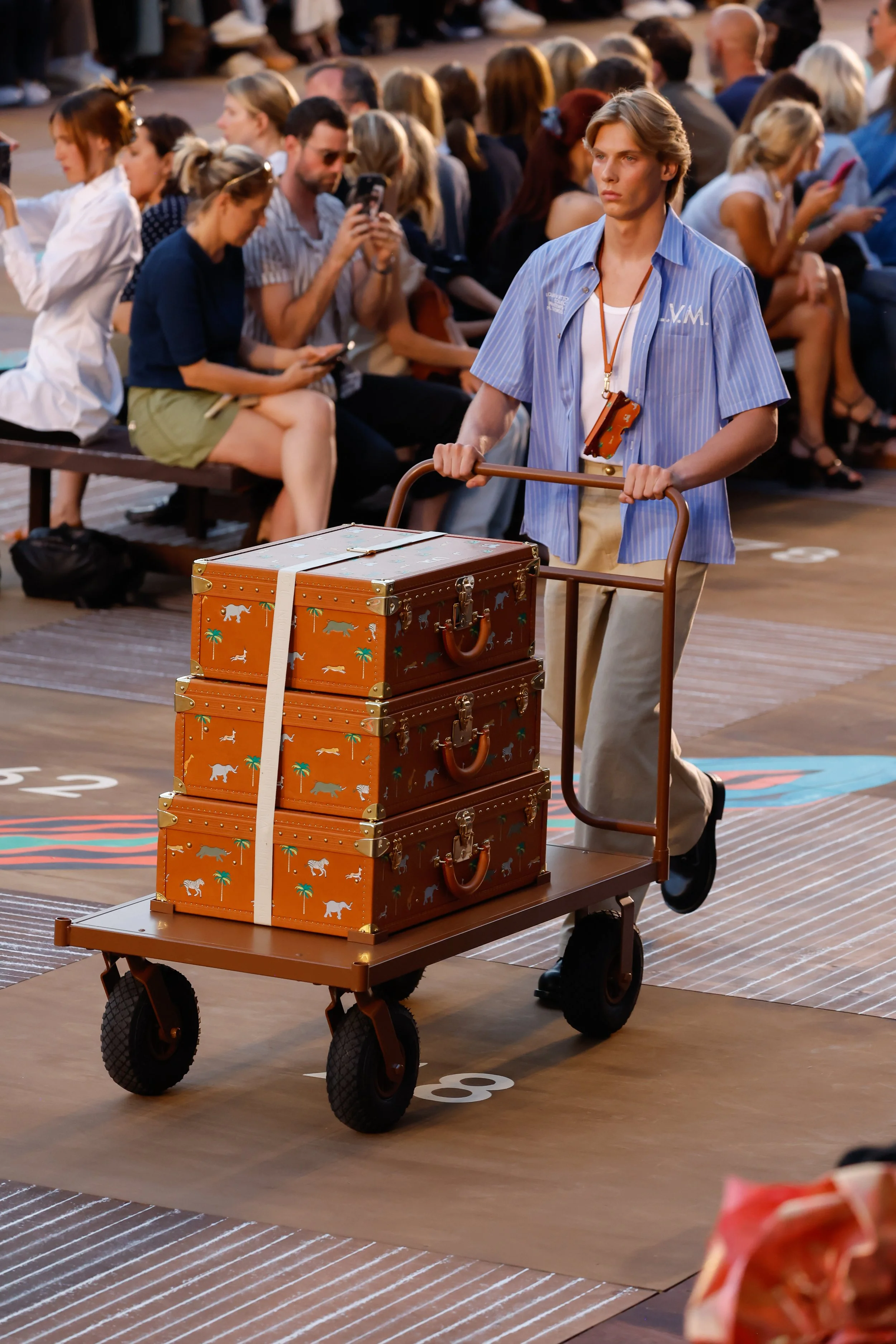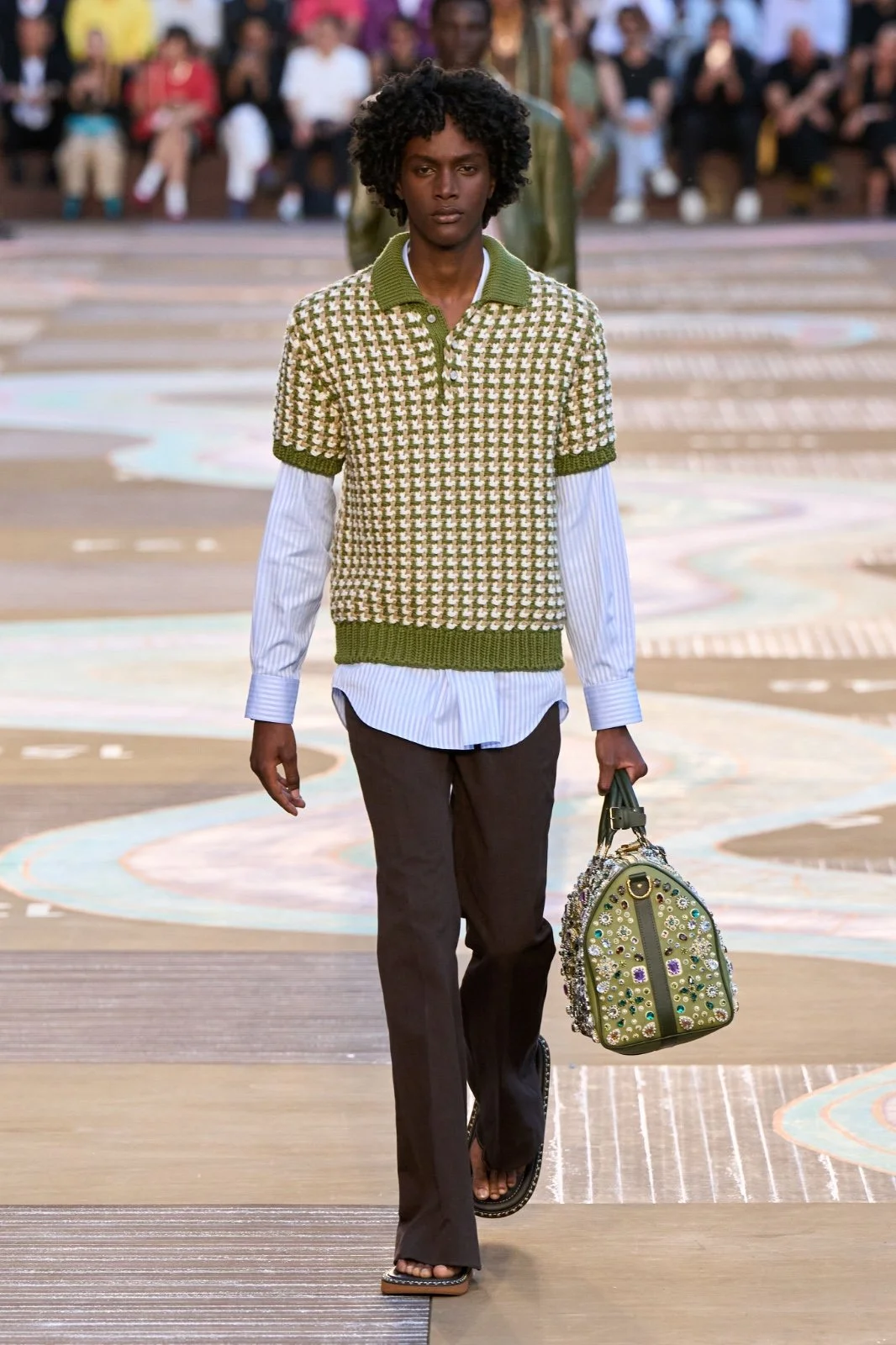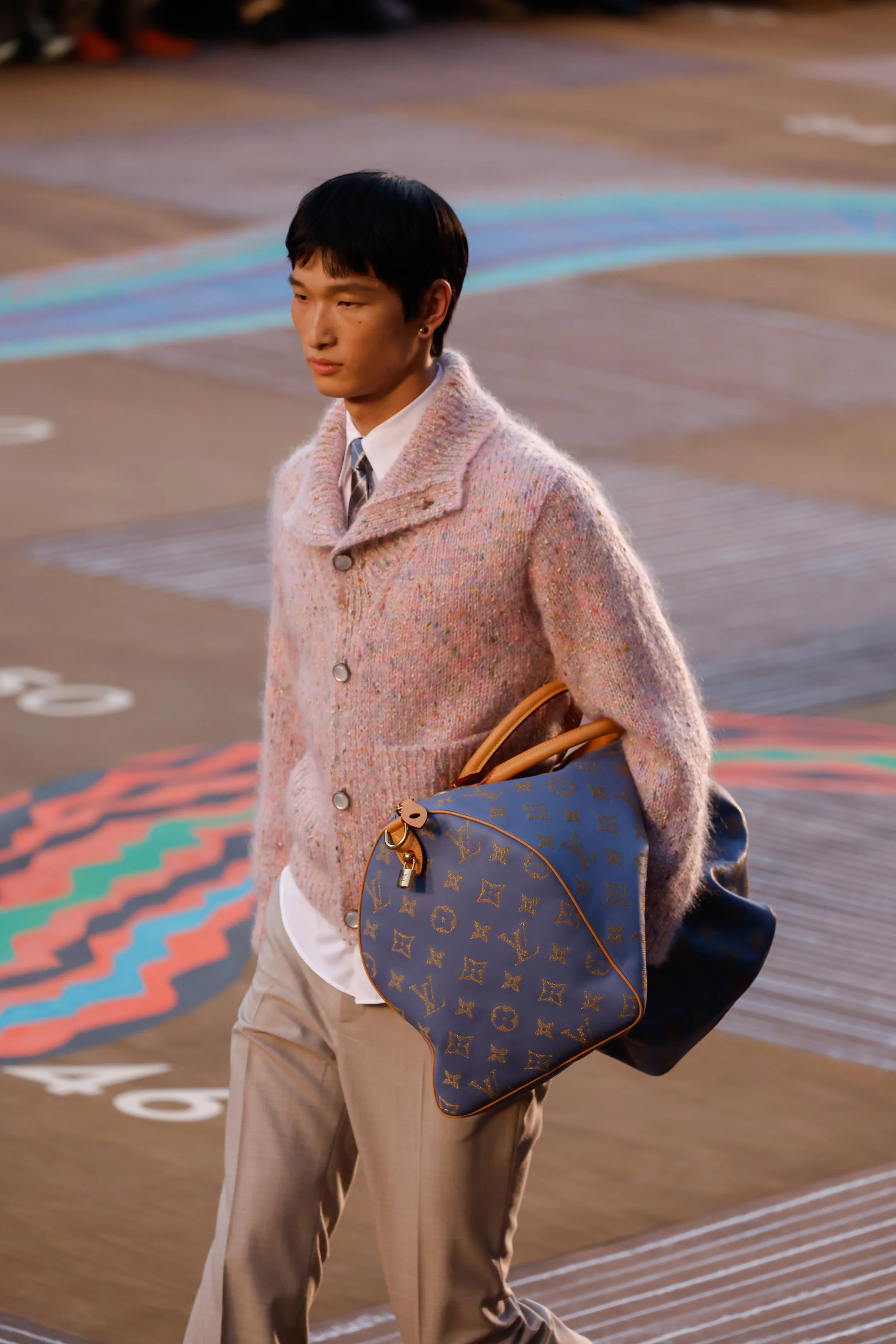image courtesy of JJ Valaya
text by Parrie Chhajed
Every July, Delhi transforms. The city, with its bustling character and chaos, becomes home to the patronage of Indian fashion. A legacy, a staged walk by greats, it hosts the India Couture Week, a celebration of craftsmanship and couture, a sanctum where heritage meets modernity, and where the past and future walk parallel.
India Couture Week 2025 was held at the iconic Taj Palace Hotel in Delhi, curated by the FDCI ( Fashion Design Council of India ). The week staged poetic interactions between culture and innovation, local and global.
Since its founding in 2008, India Couture Week has become a pivotal event in the Indian fashion calendar. The event is an ethos of the Indian spirit rooted in traditions, craftsmanship, and artisanal heritage. An answer to the Paris Haute Couture Week, an interpretation derived from India’s passed down stories and values, honoring the handicrafts that characterize Indian design.
Through the years, ICW has recognized and defined moments in the careers of Indian designers and placed India on the global stages and fashion and luxury map. It remains one of the few platforms where, every year, we backtrace further into our culture and craftsmanship while creating new stories and keeping up with today's silhouettes and innovations.
While last year revolved around softness and sentiments, the 2025 couture week conversed about identity, urging us to look deep within. The ideologies were seen being represented through shapes, silhouettes, and styles appliqued with reimagined traditions.
Through the lenses of legacy, identity, and reinvention, stories unfolded on the runway, and the ones that shone out the most were: Rahul Mishra, Amit Aggarwal, JJ Valaya, Aisha Rao, and Ritu Kumar.
Rahul Mishra – Becoming Love
The week opened with Rahul Mishra’s ethereal collection titled Becoming Love, which unfolded like a flower in the rain. Inspired by Sufiism’s magic, Mishra’s couture offered seven stages of love, each captured in finely hand-embroidered stories across fabrics such as silk organza, velvet, and tulle.
A combination of magnificence and reality. While one moment, a gown shimmered like Klimt’s The Kiss, the next, a lehenga carried the ache of longing. Alas came Tamannaah Bhatia, walking down the runway in a sculpted floral gown—proof once again that Rahul Mishra stitches emotion into every sequin.
Amit Aggarwal — Arcanum
If Mishra spoke of emotion, Amit Aggarwal answered with introspection. His collection Arcanum—a word meaning ‘mystery’—explored identity through the architecture of DNA. Using his signature polymer techniques and handwoven metallics, Aggarwal built garments like sacred codes: twisted helixes, cocooned corsets, and chrysalis gowns.
But behind the science was softness. There was something deeply moving about how structure met surrender. Couture here was not just worn—it was inhabited. Aggarwal reminded us that even the future has ancestry.
JJ Valaya — East
No one stages drama quite like JJ Valaya, and East—his closing show and a celebration of 33 years in fashion—was an imperial epic. A curation and compilation of Ottoman silks, Rajput extravagance, and East Asian tapestries, the collection was detailed and imaginative. Catalogued a collection where there was something for all, embroidered jackets, obi-style belts, brocaded cloaks, and voluminous skirts, as if they were brought to life.
Rasha Thadani and Ibrahim Ali Khan closed the show with old-world poise and new-world flair. It was a fitting finale—part history lesson, part fantasy film.
Aisha Rao — Wild at Heart
Making her ICW debut, Aisha Rao was the season’s freshest dream. Her collection Wild at Heart bloomed with lotus petals, banana leaves, and rose-gold mosaics—each appliqué whispering a kind of untamed tenderness. She layered nature into couture like a fable.
Sara Ali Khan was stunning in a beautiful Banarasi lehenga. Rao's world feels like a place where rebellion is subtle and fantasy is intricately woven with thoughtful details. The entire show was truly unforgettable.
Ritu Kumar – Threads of Time: Reimagined
A quiet storm came in the form of Ritu Kumar, one of the original matriarchs of Indian fashion. In Threads of Time: Reimagined, Kumar revisited and revitalized her archives, reworking iconic prints, paisleys, and kalidars for a new generation. It felt like a love letter to Indian textiles, with the wisdom of decades and the freshness of reinvention.
This wasn’t nostalgia—it was memory made malleable.
What We Saw, What We’ll Remember
This year, ICW saw a return to tactility. Couture was about touch—embroideries you could feel with your eyes, textures that moved like memories. There was structure, but also surrender. Motifs of roots, DNA, nature, and spirituality ran across collections like leitmotifs in a symphony.
We saw metallics meet brocade, corsetry meet kalidars, and flowers sprout from pleats. And above all, we witnessed a reclamation of Indian identity in high fashion—not as tokenism, but as a language only we know how to speak.
India’s couture scene is now more intimate and more international than ever before. With young voices like Aisha Rao stepping in with fresh fantasy and veterans like Rahul Mishra and Amit Aggarwal pushing boundaries between concept and craft, couture is evolving. Indian fashion today isn’t just bridal lehengas, it’s chronicles of the land, reflected in silhouettes and fabrics, expressed by the artists, with imagination for the bold futures.
The designers were encouraged to reflect, dream, and truly connect with their vision.

